Oculus Rift
description: virtual reality headsets developed and manufactured by Oculus VR, a division of Meta Platforms
64 results
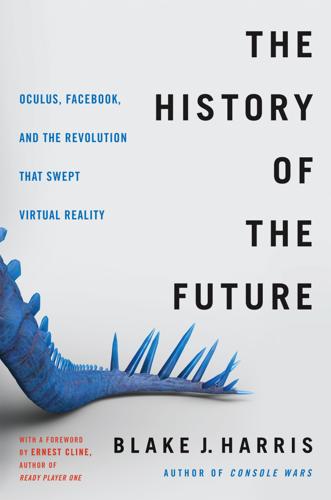
The History of the Future: Oculus, Facebook, and the Revolution That Swept Virtual Reality
by
Blake J. Harris
Published 19 Feb 2019
“The Traveler’s Guide to Quakecon.” Kotaku, August 2, 2011. 3.Pinsof, Allistair. “This Is (Was) QuakeCon.” Destructoid. August 10, 2011. 4.Luckey, Palmer, and Nate Mitchell. “Oculus Rift: Step into the Game.” Kickstarter, August 1, 2012. 5.Sheridan, Conor. “VR Headset Oculus Rift Kickstarter Successful on First Day.” GameSpot, August 1, 2012. 6.Orland, Kyle. “Oculus Rift Head-Mounted Display Finds Funding from Developers.” Ars Technica, August 1, 2012. 7.“Oculus Rift Virtual Reality Headset Gets Kickstarter Cash.” BBC, August 1, 2012. CHAPTER 12 1.Boychuk, Ben. “Review: Chess with Friends for iPhone.” Macworld, December 17, 2008. 2.Hodapp, Eli.
…
“Oculus Rift Review: This Shit Is Legit.” Gizmodo, March 28, 2016. 2.Rubin, Peter. “Review: Oculus Rift.” WIRED, March 28, 2016. 3.Robertson, Adi. “Oculus Rift Review.” The Verge, March 28, 2016. 4.Halfacree, Gareth. “Total Recall’s suit against Oculus VR, Luckey dismissed.” Bit-tech, March 13, 2017. 5.King, Hope. “Oculus Rift totally messed up its launch.” CNN, April 12, 2016. 6.Cannata, Jeff (@jeffcannata). “Order processed 12 mins after Oculus went on sale. My new estimated ship date: 5/16-5/26 . . .” Twitter. April 11, 2016. 7.Klepek, Patrick. “The Oculus Rift that I pre-ordered has been bumped from shipping in April to June.”
…
Granted, a big difference here was that most people already owned, or had access to, a computer sophisticated enough to run iTunes, but even that distinction was somewhat moot. “So this is the Oculus Rift,” Topolsky told Fallon, as the late-night host slipped the headset onto his face. And as the moment of truth approached—so much to gain, so much to lose—Iribe instinctively inched forward and . . . WITHOUT LOOKING AWAY FROM THE COMPUTER MONITOR AT HIS APARTMENT IN Finland, Steve LaValle reached beside him and felt for the hand of his wife, Anna Yershova, to share this moment with him, to share the good and the bad as they always have. The roboticists awaited Jimmy Fallon’s reaction to the Oculus Rift. JIMMY FALLON (blown away) Whaaaaaaat is going on?!

Exponential Organizations: Why New Organizations Are Ten Times Better, Faster, and Cheaper Than Yours (And What to Do About It)
by
Salim Ismail
and
Yuri van Geest
Published 17 Oct 2014
Although Second Life didn’t fully meet customer (or investor) expectations and stopped growing after a few years, it has remained consistent, with one million people online every month and an economy of $600 million in transactions. To enable a fully immersive virtual world, Rosedale’s new High Fidelity platform is leveraging hardware such as Oculus Rift, the PrimeSense depth camera and the Leap Motion gesture controller. The High Fidelity environment has reduced the time lag between gesture and system response to almost the speed of human perception, resulting in a truly real-time experience. Emotional sensing, the last key element of social technology, makes use of sensors—such as health sensors and neurotechnology—within a team or group to create Quantified Employees and a Quantified Workforce.
…
As we stated in Chapter Five, disruption is the new norm. Throughout every industry, the democratization of accelerating technologies is allowing hundreds of startups to attack and disrupt traditional markets: Bitcoin, Uber, Twitch, Tesla, Hired, Clinkle, Modern Meadow, Beyond Verbal, Vayable, GitHub, WhatsApp, Oculus Rift, Hampton Creek, Airbnb, Matternet, Snapchat, Jaunt VR, Homejoy, Waze, Quirky, Tongal, BuzzFeed—the list of disruptors is virtually endless. And while of course many newcomers won’t succeed, their sheer number means that plenty will be around long enough to create a revolution. Large companies must identify and track disruptive ExOs with the aim of observing, partnering with, investing in and/or acquiring them.
…
Implications: Algorithms driving more and more business decisions; AIs replacing a large percentage of knowledge workers; AIs looking for patterns in organizational data; algorithms embedded into products. Virtual/augmented reality Description: Avatar-quality VR available on desktop in 2-3 years. Oculus Rift, High Fidelity and Google Glass drive new applications. Implications: Remote viewing; centrally located experts serving more areas; new practice areas; remote medicine. Bitcoin and block chain Description: Trustless, ultra-low-cost secure transactions enabled by distributed ledgers that log everything.

The Long History of the Future: Why Tomorrow's Technology Still Isn't Here
by
Nicole Kobie
Published 3 Jul 2024
WIRED, September 6, 2019. https://biturl.top/nueuQ3 Index 1X Technologies - EVE and NEO here 510 Systems here A* algorithm here Abovitz, Rony here Ackland, Nigel here activism here, here ADALINE and MADALINE neural networks here Advanced Micro Devices (AMD) here Advanced Research Projects Agency Network (ARPANET) here, here Al Jaber, Sultan here Aldebaran Robotics here Alderson, Samuel W. here Alef Aeronautics here Allende, Salvador here Alphabet here, here, here Sidewalk Labs here, here see also Google Alphago algorithm, DeepMind here Altman, Sam here Amazon here, here, here American Institute Fair (1867) here American Research and Development Corporation (ARDC) here American Society of Automotive Engineers (SAE) here Anderson, Sterling here Anthony’s Robots here Antonov, Michael here Apple here, here, here, here, here, here, here, here, here augmented reality headsets here, here APT-E (Advanced Passenger Train) project, British Rail here Arcadio (aka Stelarc), Stelios here Argo AI here ARPA see DARPA (Defense Advanced Research Projects Agency) ARPANET (Advanced Research Projects Agency Network) here, here artificial intelligence (AI) here, here, here, here, here, here, here Alan Turing here Alphabet/Google here, here, here, here, here, here, here, here ‘Blocks World’ here chess challenges here, here, here, here computer vision here concerns and misuse here, here, here, here, here, here, here, here data resources and ImageNet here deep and machine learning here, here, here, here, here ‘expert systems’ and rules based models here, here, here ‘general’ intelligence here, here, here, here, here graphics processing units (GPUs) here John McCarthy here, here, here, here, here, here, here large language models (LLM) here Lighthill report (1973) and opposition here, here narrow AI here, here, here natural language processing (NLP) here, here neural networks here, here, here, here convolutional here OpenAI and ChatGPT here, here, here, here, here, here, here Perceptron model here pre-1970s here, here SRI Shakey robot here, here strong vs weak here, here symbolic here, here Timnit Gebru et al AI paper controversy here, here Asimo robot, Honda here ASKA here Asseily, Alex here Atari here, here augmented reality (AR) and virtual reality (VR) here, here Apple here, here, here Atari here, here computer graphics quality here, here development costs here Eric Howlett and the LEEP system here, here Facebook and Meta here, here, here, here Google Glass smart spectacles here, here, here Ivan Sutherland VR headsets here, here Jaron Lanier here, here, here Jonathan Waldern here metaverse the here Microsoft HoloLens here motion sickness here, here, here, here, here, here, here NASA here, here, here, here Nintendo and Virtual Boy here Palmer Luckey and Oculus Rift headsets here, here, here, here PTSD treatment here Rony Abovitz and Magic Leap here Samsung Gear VR here, here Sebastian Thrun here Sega VR here, here Snap and Vergence Labs here Sony PlayStation VR here Virtual Visual Environment Display (VIVED) here VPL DataGlove and EyePhone here, here, here, here Aurora here, here Aviauto roadable aircraft here Babbage, Charles here Bagnell, Drew here Baidu here Bakken, Earl here, here Balsillie, Jim here Banavar, Guru here banking industry here, here Barcelona, Spain here Bard LLM, Google here, here BASIC (Beginners’ All-purpose Symbolic Instruction Code) here battery technology here, here, here Beach, Alfred here, here Becker, Allen here Behringer, Reinhold here, here, here, here, here, here, here Bel Geddes, Norman here, here, here, here Bell Helicopter here Labs here, here Nexus here, here Bender, Emily here Bengio, Yoshua here Benz, Carl here Berlichingen, Götz von here Berners-Lee, Tim here Bertin, Jean here Bezos, Jeff here bionic technology here Blackrock Neurotech here ‘Blocks World’ AI development here Blomfield, Tom here ‘Blue Cruise’ automation system, Ford here Boeing here, here, here Bombe and Colossus decrypting machines here, here Boring Company here, here Boston Dynamics here, here, here, here, here, here, here, here Atlas robot here, here, here BigDog robot here, here RHex here Sandflea here Spot here, here, here, here Stretch here, here Bostrom, Nick here BrainGate/Utah Array implants here, here Branson, Richard here Bria, Francesca here Brin, Sergey here British army 2222 British Medical Journal here British Rail here, here Brooks, Harry here Brooks, Rodney here Brunel, Isambard Kingdom here Bryan, Leland here Buchanan, Bruce here Buolamwini, Joy here, here, here Burdett, Ricky here Canella, Judge John here carbon emissions here, here, here, here Cardboard, Google here Carmack, John here Carnegie Mellon University (CMU) here, here, here, here, here, here Carson, Johnny here Catalyst Research Corporation here Catanzaro, Bryan here CAVForth project, Forth Bridge here Cavoukian, Ann here CeBIT (2010) trade show here Central Intelligence Agency (CIA) here Cereproc here Chambless, Edgar here Chan Wolf, Helen here, here ChatGPT here, here, here, here Cisco here, here Claydon, Tony here Clegg, Samuel here, here climate crisis here, here Clinton Foundation here Clynes, Manfred here cochlear implants here Commodore here Convair (Consolidated Vultee Aircraft) here, here convolutional neural networks here Cook, Tim here Cornelius, Nancy here COVID-19 global pandemic here, here, here, here Cray 1 supercomputer here Crevier, Daniel here, here, here Crow, Steven here Croydon Times here Cruise, GM here, here, here, here, here Cubitt, Sir William here Cummings, Bob here Curtiss, Glenn here Cyberjaya, Malaysia here cybernetics here cyborgs and brain computer interfaces (BCIs) here BCIs here Blackrock Neurotech here Elon Musk and Neuralink here, here, here, here, here g.tec intendiX interface here, here Kevin Warwick here Mark Zuckerberg and Facebook here, here, here, here medical applications here, here, here, here, here, here, here, here Neil Harbisson and colourblindness here origins of the term ‘cyborg’ here pacemakers here Peter Scott-Morgan and ALS treatment here prosthetics and bionic technology here RFID chips here, here, here Utah Array/BrainGate implant here, here William House and cochlear implants here Cyc AGI here da Vinci, Leonardo here, here Daimler-Benz/Mercedes-Benz here, here Dally, Bill here DARPA (Defense Advanced Research Projects Agency) here, here, here, here, here, here, here, here, here, here, here, here, here Grand Challenge here, here DataGloves, VPL Research here, here Davis, Ruth here Dean, Jeffrey here DEC here Deep Blue AI here, here DeepMind, Google here, here, here DeGray, Dennis here Dendral algorithm here Desforges, Abbé here Devol, George here Dickmanns, Ernst here, here, here, here, here Dietrich, Carl here Difference Engine here Digital Equipment Corporation (DEC) here Dirks, Susanne here diversity, lack of tech industry here Djourno, Dr André here DNNresearch here, here Doctoroff, Dan here, here, here Dolgov, Dmitri here Dreyfuss, Henry here driverless cars/technology here, here, here, here 4D system here Anthony Levandowski here, here, here Anthony’s Robots pizza delivery here Argo AI here artificial intelligence (AI) here, here, here autonomy spectrum here, here current motivation for innovation here DARPA and DARPA Grand Challenge here, here Ernst Dickmanns and VaMoRs here, here, here fatalities here, here, here, here General Motors and Cruise (RCA) here, here, here, here global cost of development here Google/Alphabet and Waymo here, here, here, here, here, here, here, here, here, here motorways here, here, here, here, here NavLab 5 System and RALPH here ‘no hands across America’ trip here Norman Bel Geddes here Prometheus project here public transport here, here, here, here Road Research Laboratory (RRL), UK here Tesla here, here, here, here TRL GATEway pods here Tsukuba Mechanical Engineering Lab here Uber here, here, here US Congress here VaMP and VITA-2 here World’s Fair, New York (1939) here Dugan, Regina here Electronic Age magazine here Electronic Numerical Integrator and Computer (ENIAC) here, here Eliot, George here ELIZA here Elmqvist, Rune here Em, David here EMIEW, Hitachi here Engelberger, Joe here, here Engineer magazine here Enigma cypher here Entscheidungsproblem here ERCO Ercoupe here Ermisse, Daniel here Evans, Dave here Exhibition of the Society of Model Engineers (1928) here Eyriès, Dr Charles here Facebook here, here, here, here, here see also Meta Fairchild Semiconductor here, here Federal Aviation Administration (FAA), US here, here, here, here, here Fei-Fei Li here, here Feigenbaum, Edward here Fenton, Robert here, here Ferrer, Josep-Ramon here Fifth Generation Computer Project, Japan here Firefly driverless car here, here, here Fisher, Scott here, here Flood, Joe here Flow, Sidewalk Labs here flying cars here, here, here, here air-traffic control here Alef Aeronautics Model A here battery technology here business model operation here Carl Dietrich – Terrafugia Transition here EHang 184 (AAV) here Glenn Curtiss – Autoplane (1917) here Hafner Rotabuggy here Henry Ford – Flivver here, here Henry Smolinski Cessna/Ford here Jaunt Air Mobility Journey here Juan de la Cierva – autogyro (1923) here Ken Wernicke – AirCar here landing space and vertiports here Lilium Jets here, here, here, here, here, here, here Luigi Pellarini – Aeronova here Moulton Taylor – Aerocar here, here Opener BlackFly (later Pivotal Helix) here Paul Moller inventions here post-WWII small aircraft sales here potential practical applications here regulatory authorities here, here, here, here, here René Tampier – Avion-automobile (1921) here ‘roadable aircraft’ here, here Robert Edison Fulton – Airphibian here Sebastian Thrun – Kitty Hawk here Steven Crow – Starcar 4 here Theodore Hall and the ConvAirCar here, here Trajan Vuia – aeroplane-automobile (1902) here Vladimir Tatrinov – Aeromobile (1909) here Volocity – Volocopter here VTOLs and eVTOLs here, here, here Waldo Waterman inventions here Forbes Nash Jr, John here Ford, Henry here, here, here Ford Motor Company here, here, here Forest City, Malaysia here Forrester, Jay here Fortnite here Fortran here Foster + Partners here, here, here Foster, Quintin here, here Fox Dunn, Angela here Fujitsu here Fulton, Robert Edison here ‘Futurama’ exhibition, World’s Fair (1939) here Gaffney, Christopher here gaming industry here, here, here, here, here, here see also augmented reality (AR) and virtual reality (VR) Garrett AiResearch here Gasson, Mark here Gates, Bill here Gebru, Timnit here, here, here General Motors (GM) here, here, here, here, here, here, here General Problem Solver here generative adversarial network (GAN) here Gerhardt, Marcus here Glass smart spectacles, Google here, here Goddard, Robert here Goodfellow, Ian here Google here, here, here artificial intelligence (AI) here, here, here, here, here, here, here augmented reality and Glass smart spectacles here, here, here driverless cars here, here, here, here, here, here, here, here robots/robotics here, here, here X Labs here, here Gow, David here Graphics Processing Units (GPUs) here, here, here Greatbatch, Wilson here Greenfield, Adam here Gregory, Richard here Grumman TACRV (Tracked Air Cushion Research Vehicle) here g.tec here, here the Guardian here, here Guger, Dr Christoph here Günel, Gökçe here, here Hall, Dave and Bruce here, here, here Hall, Theodore here, here Harbisson, Neil here Hart, Peter here, here, here, here, here Harvard University here, here Hashme, Shariq here Hassabis, Demis here Hebb, Donald here Heilig, Morton here Heim, Michael here Henn na Hotel, Japan here Herzberg, Elaine here, here Heseltine, Michael here Hilbert, David here Hinton, Geoffrey here, here, here, here Hitachi here Hoff, Marcian here Hommet, Christophe here, 2241 Honda here, here, here Hopps, John here House, William here Howlett, Eric here HTC Vive VR headset here Hyman, Albert here hyperloops here, here, here 20th century pneumatic trains here Beach Pneumatic Transit Company here cable systems here Dalkey Atmospheric Railway (DAR) here Elon Musk here, here, here, here Eric Laithwaite and Tracked Hovercraft here, here European Hyperloop Week (EHW) (2023) here, here George Medhurst and Victorian pneumatic transport here, here, here, here Hyperloop TT here Isambard Kingdom Brunel here Jean Bertin and Aérotrain here John Vallance’s air-propelled carriage, Brighton (1826) here maglev technology here pneumatic postal shuttles here, here Rammel and Latimer Clark here, here Rohr Industries here, here Samuda brothers and Samuel Clegg here Shinkansen here, here, here Tracked Air Cushion Vehicles (TACV) programme here TransPod here Victorian atmospheric and pneumatic transport here, here, here Virgin Hyperloop One here IBM here, here, here, here ImageNet here Industry on Parade TV programme here the Information website here Ingels, Bjarke here Intel here, here International Conference on Robotics and Automation (2023), IEEE here, here internet here Iribe, Brendan here iRobot here Ishiguro, Hiroshi here, here Jaguar i-Pace here Joby Aviation here, here Kalinske, Tom here Kasparov, Garry here Kates, Josef here Kawasaki Heavy Industries here Kay, Alan here, here Keeling, Mary here Kese, Peter here Kim, John here Kitano, Hiroaki here Kitty Hawk here Kline, Nathan here Kobrinski, Alexander here Koppen, Otto here Krizhevsky, Alex here Krueger, Myron here Kuala Lumpur, Malaysia here Kuiken, Dr Todd here La Cierva, Juan here Laithwaite, Eric here, here languages, early computer here Lanier, Jaron here, here Larsson, Arne here Latimer Clark, Josiah here, here Laurel, Brenda here Laverde, Alberto Vejarano here Le Corbusier here LeCun, Yann here Leg Lab here Legg, Shane here Lenat, Doug here Levandowski, Anthony here, here, here, here, here, here Lidwill, Mark here Life magazine here, here Lighthill, James here, here Lilium here, here, here, here, here, here, here Linden Lab here the Line, Saudi Arabia here linear cities here linear induction motor (LIM) here, here, here Linear Induction Motor Research Vehicle (LIMRV) here Link, Sidewalk Labs here lithium batteries here, here Llama, Facebook here Lobban, Joan here Lockheed Missiles here London Pneumatic Despatch Railway (LPDR) here longtermism here Los Angeles Community Analysis Bureau (CAB) here Lovelace, Ada here LS3, Boston Dynamics’ here Luckey, Palmer here, here, here, here Lyft here Lyons here M-PESA here MacWilliam, John Alexander here Macy’s here Magic Leap here maglev technology here Mahan, Steve here Maisonnier, Bruno here Malapert, Etienne here Manchester Mark here Markoff, John here Marsh, Burton here Masdar City, UAE here Maslow, Abraham here Mattel here Mattern, Shannon here, here Mauchly, John here McCarthy, John here, here, here, here, here, here, here McClelland, James L. here McCulloch, Warren here, here McGreevy, Michael here McMillan-Major, Angelina here McShane, Clay here Mechanical Turk, Amazon here Mechanics Magazine here Medhurst, George here, here Medtronic here, here Meta here, here metaverse here Michie, Donald here, here Microsoft here artificial intelligence (AI) here, here, here HoloLens here Windows here military, US here, here, here, here, here, here, here, here, here, here, here, here, here, here, here, here, here, here Minadoi, Giovanni Tommaso here Minsky, Marvin here, here, here, here, here, here MIT (Massachusetts Institute of Technology) here, here, here, here, here Mitchell, Claudia here Mitchell, Margaret here, here Mitchell, Nate here Mitsubishi here Moller, Paul here Montandon, Adam here Montemerlo, Mike here Monzo here Moore and Moore’s Law, Gordon here Morgan, Garret here Musk, Elon here, here, here, here, here, here, here, here, here, here, here, here, here, here, here Mustang Mach-E, Ford here MYCIN here, here Nagle, Matt here Naimark, Michael here, here NASA (National Aeronautics and Space Administration) here, here, here, here, here National Transport Safety Board (NTSB), US here Nature here NerveGear headset here NetJets here neural networks here, here, here, here convolutional here Neuralink here, here, here New Scientist here New York City fires, 1970s here New York Times here, here, here, here, here, here, here, here, here Newell, Allen here, here Ng, Andrew here Nilsson, Nils here Nintendo here Virtual Boy here Normann, Richard here, here Nvidia here Ocado Technologies here Oculus Rift AR smart glasses here Oculus Rift VR headsets here, here O’Hagan, John here, here O’Kane, Josh here, here Okhitovich, Mikhail here Olson, Karl here, here Open Bionics here OpenAI here, here, here, here, here, here Opener BlackFly/Pivotal Helix here Optimize3D here Optimus robot, Tesla here Osborne 1 here Otto here Ottobock here pacemakers here Paes, Eduardo here Page, Larry here, here, here, here, here, here Papert, Seymour here Paré, Ambroise here PDP-8 and PDP-10 ‘microcomputers’ here Pellarini, Luigi here Penoyre, Slade here perceptrons, AI here Permobil F5 Corpus here Petman, Boston Dynamics’ here Pichai, Sundar here, here Pinkus, Henry here Pitcairn, Harold here Pittau, Rev.
…
Virtual reality (VR), meanwhile, immerses you in a virtual world, such as a game, where you can’t see anything outside the headset. These headsets still cause motion sickness for some, but costs have come down and VR headsets are now available at any tech store for less than the cost of a smartphone. The first time I used Glass, I panicked that I broke it. The first time I used a prototype Oculus Rift, I felt ill.2 Such woes are why AR smart glasses and VR headsets remain niche toys rather than mainstream devices, and why the user experience fails to live up to expectations – though disappointment is inevitably a risk when the hype machine begins with a guy jumping out of a plane. VR is unquestionably here, but AR continues to be a challenge to develop.
…
Luckey – a kid in an odd living situation who finished school early and took university courses for fun, sounding remarkably like Lanier (though in other ways, very much not) – spotted this core challenge and solved it on his own. (Another problem, motion sickness, took a bit longer to solve.) In 2010, he unveiled the very first prototype to a VR forum. PR1, as he dubbed it before renaming it the Oculus Rift, lacked 3D and was excessively heavy, but the large display offered a 90-degree field of vision, well above rival headsets. He kept at it, figuring out simple solutions for technical challenges: why use two screens for 3D when you can just share one screen for both eyes? Why shell out for high-end optics when you can just fix distortion in the software?

Places of the Heart: The Psychogeography of Everyday Life
by
Colin Ellard
Published 14 May 2015
London, 1969). 6Mel Slater and colleagues’ description of bystander responses in virtual reality was published in an article titled “Bystander Responses to a Violent Incident in an Immersive Virtual Environment,” in the journal PLOS One (2014, Volume 8, article e52766). 7Blascovitch describes this study and many others in his book with Jeremy Bailenson titled Infinite Reality: Avatars, Eternal Life, New Worlds, and the Dawn of the Virtual Revolution (William Morrow, New York, 2011). 8An article by my student, Kevin Barton, describing his work on wayfinding in virtual environments titled “Seeing Beyond Your Visual Field: The Influence of Spatial Topology and Visual Field on Navigation Performance,” can be found in the journal Environment and Behavior (2012, Volume 46, Pages 507–529). 9An entertaining and informative description of the Palmer Luckey story by Taylor Clark titled “How Palmer Luckey Created Oculus Rift” can be found in the issue of Smithsonian Magazine (November, 2014). Available at: http://www.smithsonianmag.com/innovation/how-palmer-luckey-created-oculus-rift-180953049/?no-ist 10Much illuminating information about the video game industry can be found at the website of the Entertainment Software Rating Board. Available at: http://www.esrb.org/about/video-game-industry-statistics.jsp 11An early and entertaining account of teledildonics titled “Teledildonics: Reach Out and Touch Someone” was written by Howard Rheingold in the journal Mondo 2000 (Summer, 1990).
…
In 2011, a precocious eighteen-year-old Californian named Palmer Luckey, frustrated with the lack of availability of good-quality head-worn displays for virtual reality, put together an ingenious set of inexpensive components, along with a healthy amount of duct tape, to produce a prototype of a headset, called the Oculus Rift, that seems destined to outstrip the capabilities of many much more expensive headsets, including the $30,000 models that I use in my laboratory. After several design iterations, and a spectacularly successful Crowdstarter campaign, Luckey parlayed his initial successes into a product that is poised to see commercial release sometime in 2015.
…
After several design iterations, and a spectacularly successful Crowdstarter campaign, Luckey parlayed his initial successes into a product that is poised to see commercial release sometime in 2015. It will probably cost consumers about $300. As one indication of the momentous anticipation of the impact that this device will have on the world of virtual reality immersion, Luckey sold the company that produces the Rift to Facebook for an amount in excess of $2 billion.9 If the Oculus Rift lives up to the hype, and early users insist that it will, it will place into the hands of ordinary consumers the tools to immerse themselves in compelling immersive virtual environments on an everyday basis. While wearing a lightweight headpiece, we will be able to transport ourselves from our living rooms to essentially anywhere that can be photographed or modeled in full stereoscopic, high-resolution glory.

Experience on Demand: What Virtual Reality Is, How It Works, and What It Can Do
by
Jeremy Bailenson
Published 30 Jan 2018
At the time of the purchase, Oculus, founded by a 21-year-old self-taught engineer who had been mentored by the genius HMD maker Mark Bolas, had already reignited interest in VR among techies and gamers a few years earlier by making a lightweight and effective HMD prototype, the Oculus Rift, jury-rigged with smartphone screens and some clever programming. “I’ve seen a handful of technology demos in my life that made me feel like I was glimpsing into the future,” wrote Chris Dixon, an investor at the influential Silicon Valley venture capital firm Andreesen-Horowitz. “Apple II, the Macintosh, Netscape, Google, the iPhone, and—most recently—the Oculus Rift.”1 While the performance of this new consumer VR equipment was not quite as good as that of the state-of-the-art hardware in labs like mine, it was good enough to avoid the major performance problem that had bedeviled previous attempts at consumer VR—nausea-inducing lag.
…
I suspect this is the final sign that VR is officially mainstream. At the higher end, more expensive VR systems (costing about $2,000, including the powerful computer required to run them), aimed at hard-core tech enthusiasts and videogamers, were just starting to be released. The HTC Vive and the long-awaited Oculus Rift are leading this charge. Unlike the more passive VR systems enabled by Cardboard and Gear, these higher-end systems are more immersive and are closer to the experience that can be produced in a lab like the one I run at Stanford. Combined with haptic devices, which provide touch and game controllers, they allow interactive engagement within digitally created worlds.
…
Almost everyone, upon trying it for the first time, can feel the significance and sheer magnitude of the technology. And yet we’re still trying to figure out what it does best. My 91-year-old grandfather summed up the challenge well. After years of working with VR, I finally convinced him to put on the Oculus Rift and do a few demos. After a few minutes, only moderately impressed, he took it off, shrugged, and said, “What am I supposed to do in here?” He didn’t say it in a pejorative way, but was clearly trying to understand the point of this amazing technology. Consumer VR is coming like a freight train.
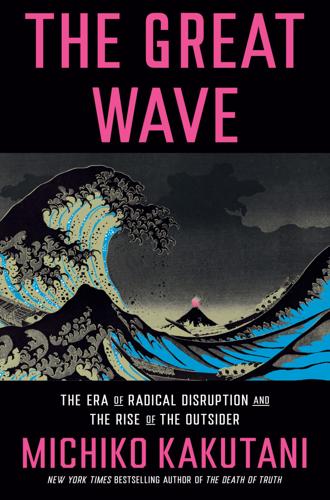
The Great Wave: The Era of Radical Disruption and the Rise of the Outsider
by
Michiko Kakutani
Published 20 Feb 2024
GO TO NOTE REFERENCE IN TEXT Oculus Rift: Max Chafkin, “Why Facebook’s $2 Billion Bet on Oculus Rift Might One Day Connect Everyone on Earth,” Vanity Fair, Sept. 8, 2015, vanityfair.com/news/2015/09/oculus-rift-mark-zuckerberg-cover-story-palmer-luckey; Jenna Wortham, “Creator of a Virtual Reality Sensation,” The New York Times, Mar. 26, 2014, nytimes.com/2014/03/27/technology/creator-of-a-virtual-reality-sensation.html; Taylor Clark, “How Palmer Luckey Created Oculus Rift,” Smithsonian Magazine, Nov. 2014, smithsonianmag.com/innovation/how-palmer-luckey-created-oculus-rift-180953049/. GO TO NOTE REFERENCE IN TEXT fastest-growing population in the military: Adrianna Rodriguez, “Latinos Are Fastest Growing Population in US Military, but Higher Ranks Remain out of Reach,” USA Today, Mar. 23, 2020, usatoday.com/in-depth/news/nation/2020/05/23/latino-hispanic-military-high-ranking-commissioned-officer-positions/4668013002/.
…
Kickstarter was launched in 2009, and by the end of 2022 it had been used by some twenty-two million people to pledge more than $7 billion to more than 200,000 projects including more than a dozen award-winning films shown at the Sundance, Tribeca, and SXSW festivals. Projects that won backers on Kickstarter ranged from small, whimsical endeavors (like Silent Meditation, a limited run of translucent vinyl LPs that featured “two sides of complete silence”), to hugely ambitious undertakings like Oculus Rift, a virtual reality headset designed by a young college dropout named Palmer Luckey who built a prototype in his parents’ garage, raised $2.4 million on Kickstarter in 2012, and two years later sold the company to Facebook for $2 billion. Instead of relying upon record labels and radio stations to promote their work, young artists began using online video- and music-sharing sites: Justin Bieber was discovered on YouTube, Billie Eilish went viral on SoundCloud, and Lil Nas X scored the longest-running No. 1 song on the U.S.
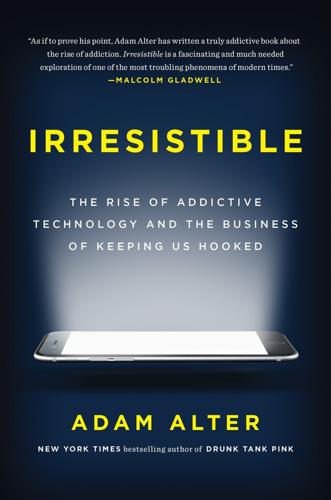
Irresistible: The Rise of Addictive Technology and the Business of Keeping Us Hooked
by
Adam L. Alter
Published 15 Feb 2017
“Instead of sitting through forty-five seconds on the news of someone walking around and explaining how terrible it is, you are actively becoming a participant in the story that you are viewing,” said Christian Stephen, a producer of one of the VR documentaries. But the Google Cardboard pales next to the Oculus Rift. According to Palmer Luckey, founder of Oculus VR, “Google Cardboard is muddy water compared with the fancy wine of Oculus Rift.” Of course, for the moment, Google Cardboard has the advantage of costing around $10 online, while the Oculus Rift sells for $599. Despite the promise of VR, it also poses great risks. Jeremy Bailenson, a professor of communication at Stanford’s Virtual Reality Interaction Lab, worries that the Oculus Rift will damage how people interact with the world. “Am I terrified of the world where anyone can create really horrible experiences?
…
In 2013, a VR company called Oculus VR raised $2.5 million on Kickstarter. Oculus VR was promoting a headset for video games called the Rift. Until recently, most people thought of VR as a tool for gaming, but that changed when Facebook acquired Oculus VR for $2 billion in 2014. Facebook’s Mark Zuckerberg had big ideas for the Oculus Rift that went far beyond games. “This is just the start,” Zuckerberg said. “After games, we’re going to make Oculus a platform for many other experiences. Imagine enjoying a court side seat at a game, studying in a classroom of students and teachers all over the world or consulting with a doctor face-to-face—just by putting goggles in your home.”
…
I spoke to several: These clinical psychologists agreed to speak on condition that I refrained from using their names. They were concerned their patients might recognize the anecdotes they relayed anonymously. Writing for Time: John Patrick Pullen, “I Finally Tried Virtual Reality and It Brought Me to Tears,” Time, January 8, 2016, www.time.com/4172998/virtual-reality-oculus-rift-htc-vive-ces/. CHAPTER 1: THE RISE OF BEHAVIORAL ADDICTION On the Moment: The Moment website: inthemoment.io/; Holesh’s blog: inthemoment.io/blog. Other pieces on Holesh and his app include: Conor Dougherty, “Addicted to Your Phone? There’s Help for That,” New York Times, July 11, 2015, www.nytimes.com/2015/07/12/sunday-review/addicted-to-your-phone-theres-help-for-that.html; Seth Fiegerman, “‘You’ve Been on Your Phone for 160 Minutes Today,’” Mashable, August 14, 2014, mashable.com/2014/08/19/mobile-addiction/; Sarah Perez, “A New App Called Moment Shows You How Addicted You Are to Your iPhone,” TechCrunch, June 27, 2014, techcrunch.com/2014/06/27/a-new-app-called-moment-shows-you-how-addicted-you-are-to-your-iphone/; Jiaxi Lu, “This App Tells You How Much Time You Are Spending, or Wasting, on Your Smartphone,” Washington Post, August 21, 2014, www.washingtonpost.com/news/technology/wp/2014/08/21/this-app-tells-you-how-much-time-you-are-spending-or-wasting-on-your-smartphone/.

Augmented: Life in the Smart Lane
by
Brett King
Published 5 May 2016
Virtual reality has some equally as promising applications that could be released commercially well before those designed by Magic Leap. If you want to check out some of the available games already optimised for Oculus Rift, I’d recommend PewDiePie’s feed or similar. Unquestionably, one amazing innovation of VR will be simulated environments that allow you to experience the world in a way an AR headset never could do. For example, Somniacs, a company based in Zurich, Switzerland, has created a flying simulator called Birdly. Birdly simulates the experience of flying like a bird by marrying a Oculus Rift VR headset with a rig you lie on that allows you to flap your arms and basically feel like a bird. “Ever dreamed of flying like a bird?
…
Newer technologies can get higher resolution and clearer images via either see-through displays or organic light-emitting diode (OLED) displays with microlenses in front or via laser or some other projection directly onto the eye’s surface. All of these technologies are designed for augmenting reality largely. In contrast, virtual reality (VR) headsets like the Oculus Rift have a 1080-pixel x 1200-pixel resolution liquid-crystal display (LCD) or OLED panels embedded in a wrap-around viewer/headset. Typical VR headsets feature per-eye displays running at 90 Hz, 360-degree positional tracking, integrated audio, positional tracking volume and a designed focused on wearability and aesthetics.
…
• Augmented reality is the sort of technology we’re talking about in a PHUD, or more immediately through technologies like Magic Leap and Microsoft HoloLens. • Virtual reality is an immersive experience that puts you in a totally virtual world, and through processing improvements and better screen resolution, VR headsets are rapidly being commercialised in the form of Oculus Rift, HTC Vive, Samsung Gear VR and others. • Augmented virtuality (AV), however, is augmenting a virtual world with real-world artefacts; a merging of the real world into VR. Augmented virtuality might encompass, for example, projecting your body into a virtual environment so that you can see your hands turn a virtual door handle or look down at your virtual feet as you walk through a virtual environment.
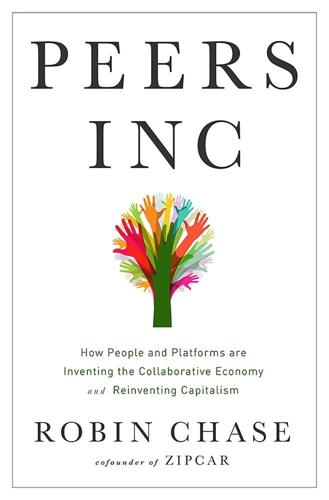
Peers Inc: How People and Platforms Are Inventing the Collaborative Economy and Reinventing Capitalism
by
Robin Chase
Published 14 May 2015
Using no-equity crowdfunding to understand market demand or create a pilot that is then followed by equity funding or a successful acquisition has raised moral outrage in some circumstances. Oculus Rift, the company producing a virtual-reality headset, raised $2.4 million on Kickstarter. A year and a half later, Google bought the company for $2 billion. The headline of an article from Verge, an online magazine, asks: “If you back a Kickstarter project that sells for $2 billion, do you deserve to get rich?”10 Had a $300 “gift” to Oculus Rift been a typical Series A investment, it would have resulted in a return of $43,500.11 Sure, the people who backed the project did so with eyes wide open.
…
Its purpose was to give individual creators “an agile, low-overhead and low-cost copyright-management regime, profiting both copyright owners and licensees.”14 With CC, you can allow anyone to use your material for any purpose, or to add some restrictions (for example, “If you are going to use this commercially, you need to tell me and license the use from me”). If we go back to the Oculus Rift story, the application of these kinds of licenses might have prevented the donors from feeling that they had been abused (and might also have caused Oculus founders to choose a different source of financing). Kickstarter and other donation funding sites might consider creating some simple rules, like GPL and CC, that could quickly and easily cover these low-likelihood financial windfalls.
…
Accenture, “The ‘Greater’ Wealth Transfer: Capitalizing on the Intergenerational Shift in Wealth,” 2012, www.accenture.com/us-en/Pages/insight-capitalizing-intergenerational-shift-wealth-capital-markets-summary.aspx. 10. Adrianne Jeffries, “If You Back a Kickstarter Project That Sells for $2 Billion, Do You Deserve to Get Rich?” TheVerge.com, March 28, 2014, www.theverge.com/2014/3/28/5557120/what-if-oculus-rift-kickstarter-backers-had-gotten-equity. 11. Greg Belote, “What If Oculus Crowdfunded for Equity? A 145x Return,” WeFunder, March 26, 2014, https://wefunder.me/post/42-what-if-oculus-crowdfunded-for-equity. 12. “Top 20 Open Source Licenses,” BlackDuckSoftware.com, www.blackducksoftware.com/resources/data/top-20-open-source-licenses. 13.
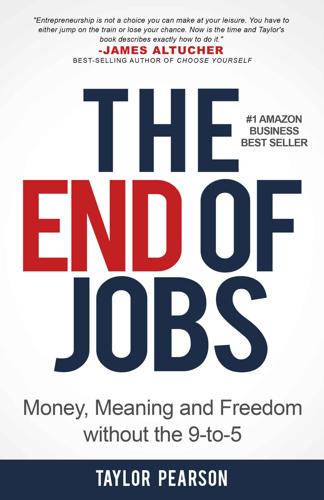
The End of Jobs: Money, Meaning and Freedom Without the 9-To-5
by
Taylor Pearson
Published 27 Jun 2015
The multiples that are commanded by entrepreneurial companies when they’re acquired by corporations are seemingly absurd, and yet steadily rising. Entrepreneurial companies that were acquired in the last five years like Mint, WhatsApp, and Oculus Rift all got multiples far higher than what any traditional business valuation would have yielded because they positioned themselves to be strategically acquired. Less than two years after it was founded, Oculus Rift was bought by Facebook for $2 billion. WhatsApp was also acquired by Facebook for $21.8 billion, 2000× the annual revenue. Financial tracking company Mint was bought by Intuit two years after it was founded for $170 million.
…
Mike and Kimberly, two early readers of this book alerted me to the creation of the game walkthrough market, also known as “Let’s Players,” because the videos originally boasted titles like “Let’s Play Legend of Zelda.” Using $20 screen recorder software, a $30 webcam, and a $60 microphone, Let’s Players play video games and offer commentary to prospective gamers. PewDiePie, a Swedish Let’s Player, has generated $12 million dollars from his videos. The Oculus Rift Virtual Reality headset first sent its market feelers out through Let’s Players, who tested out games with the headset. Now the headset is rapidly on its way to being commonly available to the masses. As more and more platforms are built, there are more and more distribution channels opening up every day.

The Future Is Faster Than You Think: How Converging Technologies Are Transforming Business, Industries, and Our Lives
by
Peter H. Diamandis
and
Steven Kotler
Published 28 Jan 2020
But as the 2000s progressed, the convergence of increasingly powerful game engines and AI image-rendering software turned deceptive into disruptive and the VR universe opened for business. Startups started starting up. And being acquired. In 2012, Facebook made waves when they spent $2 billion to acquire the VR company Oculus Rift. By 2015, Venture Beat reported that a market which typically saw only ten new entrants a year, suddenly had 234. The year 2017 was a banner one for Samsung, when they sold 3.65 million headsets and turned enough heads that everyone from Apple and Google to Cisco and Microsoft decided to investigate VR.
…
Yet the biggest development isn’t in the amount of cash involved; rather, it’s who gets access to that cash. Peer-to-peer microlending sites like Kiva have brought available capital to parts of the world where investors have long turned a blind eye, while reward-based programs have given us everything from difficult to fund ocean cleanup technologies to pie-in-the-sky breakthroughs such as Oculus Rift. By democratizing access to capital, crowdfunding allows anyone, anywhere, with a good idea and access to a smartphone, to seek the cash they need to get going. It’s why Goldman Sachs described crowdfunding as “potentially the most disruptive of all the new models of finance.” If crowdfunding is the new way for entrepreneurs to raise capital, then venture funding, our next category, represents the old.
…
Virtual reality will significantly increase that percentage. “Facebook is an addictive technological drug that, like every drug, gives people temporary pleasure and, ultimately, causes people to become psychiatrically ill,” psychiatrist Keith Ablow recently explained in an article for Fox News. “Oculus Rift will make matters worse.” Yet dopamine is merely one of the brain’s major reward chemicals. There’s also norepinephrine, endorphins, serotonin, anandamide, and oxytocin to consider. All are massively pleasurable. Digital media isn’t incredibly effective at producing any beyond dopamine, but the immersive nature of VR makes it able to trigger all six.
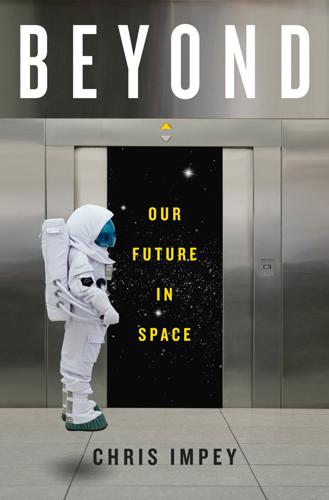
Beyond: Our Future in Space
by
Chris Impey
Published 12 Apr 2015
Robinson 1993 covers colonization; the quote in the following paragraph is from p. 171. Green Mars by K. S. Robinson 1994 covers terraforming. Blue Mars by K. S. Robinson 1995 covers the long-term future of human habitation. All are published by Random House (New York). 10: Remote Sensing 1. “Why Oculus Rift Is the Future of Gaming,” online at http://www.gizmoworld.org/why-oculus-rift-is-the-future-in-gaming/. 2. Intriguingly, telepresence doesn’t have to convey the remote scene with perfect fidelity, because the brain has a tendency to “fill in the blanks” and “smooth out the rough edges” of any representation that is familiar. See “Another Look at ‘Being There’ Experiences in Digital Media: Exploring Connections of Telepresence with Mental Imagery” by I.
…
The Sims sold more than 150 million copies worldwide. If we think of how far video games came in twenty years, from the primitive graphics of Pac-Man to the cartoonish but quasi-realistic 3-D graphics of The Sims, imagine what another twenty years will bring. A hint of that came in 2014 with the release of the Oculus Rift, a gaming helmet that immerses a player in 3-D virtual reality.1 The best sense of the experience is the dramatic opening sequence of the 3-D movie Gravity. The future of Solar System exploration may lie in telepresence, a set of technologies that allow a person to feel that he or she is in a remote location.
…
Mex., 239 Los Angeles Times, 71 Losing My Virginity (Branson), 86, 87 Louis IX, king of France, 23 Louis XVI, king of France, 68 Lovelock, James, 286 Lowell, Percival, 163–64 Lucian of Samosata, 20 Lucretius, 18–19 Luna program, 50–51 Lunar and Planetary Laboratory, 156 Lunokhod rover, 143 Lynx rocket plane, 101 M5 fiber, 161 McAuliffe, Christa, 55, 74 Mack 3 Blackbird, 69 McKay, Chris, 173 McLellan, William, 283 magnetic implants, 207 magnetic resonance imaging (MRI), 190 magnetic sails, 186, 223 magnitude of time, 248–50, 249 Manhattan Project, 36, 221 Manifest Destiny, applied to space, 146–47, 199 Manned Habitat Unit, 169 many worlds concept, 17–20, 17, 49, 267 Mao Zedong, 141 Marconi, Guglielmo, 237 Mariner 2, 51 Mariner 4, 164 Marino, Lori, 190 Marriott hotels, 145 Mars, 28, 237, 270 challenges of travel to, 166–70 distance from Earth to, 50, 148, 166 Earth compared to, 171–72, 216 establishing a colony on, 166–71, 169, 192, 195, 200–201, 203, 214, 248 evidence of water on, 124–25, 163–66, 165, 173 fly-bys of, 51, 170 imaginative perceptions of, 163–65 latency on, 178 map of, 163 obstacles to exploration of, 66–67, 148 one-way journey to, 166, 170–71, 200 as potentially habitable, 124–25, 163, 165–66, 171, 172–74, 234, 278 privately funded missions to, 170–71 probes to, 40, 51, 52, 164–65, 176, 246 projected exploration of, 94–98, 101, 104, 115, 119, 157, 161, 163–74, 178, 181, 182 property rights on, 145, 198–99 sex and reproduction on, 200 simulated journey to, 169–70 soil of, 170 staging points for, 161 terraforming of, 172–74, 182, 216, 227 tests for life on, 52 Mars Direct, 169 Mars500 mission, 169 Mars One, 170–71, 198–201 Mars Society, 166 Mars 3 lander, 51 Masai people, 120 Massachusetts General Hospital, 250 Masson-Zwaan, Tanja, 199 mathematics, 19 as universal language, 236–37 Matrix, The, 260 matter, manipulation of, 258 matter-antimatter annihilation, 220, 220, 221–22 Mavroidis, Constantinos, 182 Max-Q (maximum aerodynamic stress), 46 Maxwell, James Clerk, 183 Mayor, Michel, 126–28, 133 medicine: challenges and innovation in, 92–93, 263 cyborgs in, 205 medicine (continued) as lacking in space, 200 in life extension, 259 nanotechnology in, 225, 259 robots in, 180, 181, 182, 205 mediocrity, principle of, 261 Mendez, Abel, 278 mental models, 13–17, 18–19 Mercury: orbit of, 126, 215 property rights on, 145 as uninhabitable, 124 mercury poisoning, 118 Mercury program, 41, 42, 71, 74, 272 meta-intelligence, 94 meteorites, 152, 160, 160, 164, 195 methane, 52–53, 125, 132, 278 as biomarker, 217–18 methanogens, 217 “Method of Reaching Extreme Altitudes, A” (Goddard), 30, 31 Methuselah, 131 mice, in scientific research, 48–49, 250–51 microbes, microbial life, 97–98, 173, 174, 217, 241, 246, 286 habitable environments for, 122–25, 165–66, 186 microcephaly, 203 microgravity, 115 microsatellites, 90 Microsoft, 84, 188 microwaves: beaming of, 223–24 signals, 187 Microwave Sciences, 223 Middle East, population dispersion into, 8, 118 migration: early human population dispersion through, 5–9, 9, 15, 19 motivation for, 9–12, 11 military: covert projects of, 69–72 Eisenhower’s caveat about, 79 in Internet development, 77, 78–79 nanotechnology in, 180–81, 225 in rocket development, 30, 32–39, 55–56, 71 in space programs, 73, 76, 79, 144, 153 Milky Way galaxy, 227, 240, 253, 263, 270 ancient Greek concept of, 18 Drake equation for detectable life in, 188, 233–35 Earth-like exoplanets in, 129–33, 233, 291 formation and age of, 235 size of, 242 Millis, Marc, 290 mind control, 245 mind uploading, 259 miniaturization, see nanotechnology minimum viable population, 201, 251 mining: of asteroids, 155–56, 182, 214 of Enceladus, 227 on Moon, 214 by robots, 178, 182 Minsky, Marvin, 177, 179 MirCorp, 75 mirrors, 173 Mir Space Station, 75, 115, 167–68 Miss Baker (monkey), 47–48, 48 Mission Control, 43, 100, 158, 269 MIT, 38, 77, 90, 141, 226, 257 mitochondrial DNA, 6, 9 Mittelwerk factory, 33, 35 Mojave Desert, 71, 82, 83 population adaptation to heat in, 118–19 molecules, in nanotechnology, 151 Mongols, 23, 24 monkeys, in space research, 47–48, 48 Montgolfier brothers, 68 Moon: age of, 50 ancient Greek concept of, 18 in asteroid capture, 156 distance from Earth to, 49–50, 150, 166, 267 first animals on, 49 first man on, 71, 158 latency on, 178 lunar base proposed for, 157–63, 158, 160, 195, 214, 248 manned landings on, 44–45, 49–50, 54, 56, 63, 71, 84, 99, 104, 108, 143, 157, 158, 176, 219, 270, 272 obstacles to exploration of, 66 orbit of, 25 probes to, 40, 51, 129, 140, 143 projected missions to, 92, 143, 157–63, 166, 214, 275 property rights on, 145–47, 198–99 proposed commercial flights to, 102 in science fiction, 20, 26 soil of, 159, 160, 162 as staging point for Mars, 161 staging points for, 148 telescopic views of, 31, 49–50 as uninhabitable, 124, 166 US commitment to reach, 41–45 Moon Treaty (1979), 146 Moon Treaty, UN (1984), 279 Moore, John, 203 Moravec, 259–60 Morgan, Barbara, 74 Morrison, Philip, 187, 239 Mosaic web browser, 79 Moses, 148 motion, Newton’s laws of, 25, 67–68 multistage rockets, 29 multiverse, 252–57, 255 Musk, Elon, 94–98, 97, 100–101, 112–13, 148, 205 mutation, 6–7 cosmic rays and, 204 7R, 10–12, 11, 15 mutually assured destruction, 42 Mylar, 184, 225 N1/L3 rocket, 44, 54 nanobots, 179–82, 181, 224–28 NanoSail-D, 184, 185 nanosponges, 180 nanotechnology, 151–52, 179–82, 208, 214, 245, 280, 283 projected future of, 257–59 see also nanobots National Aeronautics and Space Administration (NASA), 83, 90, 96, 97–98, 114, 116–17, 128, 144, 153, 156, 176, 178, 182, 184–85, 185, 195, 200, 205, 206, 216, 224, 226, 271, 275, 280, 290 and Air Force, 71 artistic depiction of space colonies by, 196, 196 budget of, 39, 42, 43, 49, 54, 64, 75, 99, 104, 140, 144, 158, 166, 188, 238, 270, 272, 284 cut back of, 45, 49, 54, 188 formation of, 38–39, 145, 269 private and commercial collaboration with, 99–102, 104 revival of, 103–5 space program of, 51, 55–56, 71–76, 92, 157–58, 285–86 stagnation of, 63–67, 141, 147, 166 National Geographic Society, 7, 265 National Radio Astronomy Observatory, 187–88 National Science Foundation (NSF), 78–79 Native Americans, 118 naturalness, 256 natural selection, 6, 16, 123, 164, 251, 291 Nature, 187 Naval Research lab, 37 Navy, US: Bureau of Aeronautics, 30 in rocket development, 36–37 Nayr, Ernst, 238 Nazis, 48 Propaganda Ministry of, 32 von Braun and, 32–34, 141, 269 NBC, 75 Nedelin, Mitrofan, 43 “needle in a haystack” problem, 188–89, 242–43 “Nell” (rocket), 29 Neptune, 127, 131, 225 as uninhabitable, 125 Nergal, 163 Netscape, 80 New Mexico, 88, 88, 105 Newton, Isaac, 24–25, 25, 30, 67–68, 110, 262, 267 New York Times, 30, 94 Nicholas, Henry, 214 Niven, Larry, 198, 253 Nixon, Richard, 108, 167 Nobel Prize, 126, 180, 214 nomad planets, 128 Noonan, James, 266 nuclear fission, 220, 220, 221 nuclear fusion, 110, 161–62, 220, 221, 221, 222 nuclear reactors, 224 nuclear weapons, 36, 42, 78, 129, 146, 197–98, 222, 234–35, 244, 245, 246, 286 Nuremberg Chronicles, 17 Nyberg, Karen, 200 Obama, Barack, 104 Oberth, Hermann, 28, 31–32, 36, 268 oceans: acidification of, 195 sealed ecosystem proposed for, 197 Oculus Rift, 176 Ohio, astronauts from, 74 Okuda, Michael, 228 Olsen, Ken, 213 100 Year Starship project, 224 100 Year Starship Symposium, 229 101955 Bennu (asteroid), 156 O’Neill, Gerard, 196, 251–52 Opportunity rover, 165 optical SETI, 190, 243 Orbital Sciences Corporation, 100–101, 275 orbits: concept of, 25 geostationary, 149–50, 150 legislation on, 146 low Earth, 49, 54, 63, 70–71, 70, 74–75, 97, 100, 110, 113–14, 151, 155, 184 manned, 40–41, 141–42 staging points from, 148 orcas, 190 Orion spacecraft, 104 Orteig, Raymond, 90 Orteig Prize, 90–91 Orwell, George, 35 OSIRIS-REx, 156 Outer Space Treaty (1967), 145–47, 198–99 “Out of the Cradle, Endlessly Rocking” (Clarke), 201 oxygen, 156, 159, 161, 170, 172, 173–74, 182, 193–95, 214 Oymyakon, Siberia, population adaptation to cold in, 119–20 ozone, as biomarker, 217 Pacific Ocean, 9, 224 Pac-Man, 175 Page, Larry, 92 Paine, Thomas, 167 Pale Blue Dot (Sagan), 121 “Pale Blue Dot,” Earth as, 53, 118–22, 121, 130 Paperclip, Operation, 141 parabolic flight, 93 paradox, as term, 241 Paratrechina longicornis (crazy ant), 193 Parkinson’s disease, 202–3 particle physics, standard model of, 256 Pascal, Blaise, 120 Pauley, Phil, 196–97 PayPal, 95, 97 Pensées (Pascal), 120 People’s Daily, 162 People’s Liberation Army, 144 Pericles, 18 Pettit, Don, 100, 273 phenotype, 6 philanthropy, 95 PhoneSat, 185 photons, 183, 186 in teleportation, 229, 230, 231 photosynthesis, as biomarker, 217 pigs, 250 Pinker, Steven, 16 Pioneer probes, 50, 51–52 piracy, 24 Pitcairn Island, 202 planetary engineering, 172 Planetary Resources, 156 planetary science, 51–52, 176 Planetary Society, 184 planets: exploration of, 49–53 formation of, 156 plate techtonics, 132, 241 play, imagination in, 10, 14 pluralism, 17–20, 17, 49 plutonium, 66 poetry, space, 272–73 politics, space exploration and, 63–64, 104, 141, 214, 238 Polyakov, Valeri, 115, 167–68 population bottleneck, 201–2, 287 Poynter, Jane, 193 Princess of Mars, A (Burroughs), 164 Principia (Newton), 25 Project Orion, 221, 221 Project Ozma, 187–88, 237, 253 prokaryotes, 172 property rights, in space, 145–47, 198 Proton rockets, 65, 113 proton scoop, 222–23 Proxmire, William, 238 Puerto Rico, 239, 243 pulsar, 131 Pythagorean Theorem, 238 Qian Xuesen, 141 Qi Jiguang, 24 Qualcomm Tricorder X Prize, 92 quantum entanglement, 230–32, 230 quantum genesis, 255 quantum mechanics, 258 quantum teleportation, 230–32, 230 quantum theory, 189 qubits, 230 Queloz, Didier, 126–28, 133 R-7 rocket, 37 R-16 rocket, 43 radiation, infrared, 109, 253–54, 254 radioactivity, as energy source, 124, 181 radio waves, 66, 187, 189, 242 ramjets, 222–23 RAND Corporation, 222 Rare Earth hypothesis, 241 RCS Energia, 106 RD-180 engine, 72 Reagan, Ronald, administration of, 167, 271 reality TV, 75, 171, 214, 282 “Realm of Fear,” 229 reasoning, human capacity for, 13–17, 18–19 red dwarfs, 131 Red Mars (Stanley), 174 Red Scare, 141 Redstone rocket, 36–37, 71 reindeer, 119–20 remote sensing, 175–91, 224 RepRap Project, 227 reproduction, sexual, 6, 172 Ride, Sally, 74 “Right Stuff,” as term, 71, 114 Right Stuff, The (Wolfe), 272 Ringworld series (Niven), 253 risk: as basic to human nature, 9, 262 genetic factor in, 10–12 of living on Mars, 167–70 in pushing human limits, 120 of space tourism, 102, 105–9, 155 of space travel, 42–43, 55–56, 56, 106–9, 152–53 Robinson, Kim Stanley, 174 robonaut project, 179 robots, robotics: as aids to humans, 249, 250 in asteroid redirection, 104 commercial, 178 ethical issues of, 179 nanotechnology in, 179–82, 181 remote control of, 177–78 remote sensing through, 176 self-assembly and self-replication by, 226–28, 258, 259 in spacecraft, 50, 100, 100 space exploration by, 53–57, 66, 98, 133, 161, 177–79, 179, 208, 224–28 see also cyborgs; nanobots Rocketdyne, 112 rocket equation, 27, 53, 72–73, 110–11, 111, 148, 220, 268 rocket fuel, 110–13, 148, 156, 159, 161 comparison of efficiency of, 219–24 Rocket Performance Calculator, 222 rockets: alternatives to, 148–53 “bible” of, 267 challenges in launching of, 43–44, 46–49, 106, 107, 111–12, 148 comparison of US and Soviet, 44 cost of, 112–13, 113 developing technology of, 21–39, 43, 101, 103, 112–13, 183, 262 fuel for, 110–13, 148, 156, 159, 161, 220–21 launched from planes, 84 liquid-fueled, 28–29, 29 physics and function of, 110–14 proposed energy technologies for, 220–24 reusable, 101, 103, 111, 112, 113 solar sails compared to, 183 as term, 23 visionaries in development of, 26–30, 94 in warfare, 22–24, 30, 32–34 see also specific rockets “Rockets to the Planets in Space, The” (Oberth), 28 Rogers Commission, 271 Rohrabacher, Dana, 284 Rome, ancient, 18, 67, 163 Rovekamp, Roger, 207 rovers, 66–67, 92, 125, 140, 143, 158, 165, 167 nanotechnology in, 181–82 remote sensing through, 176 Rozier, Jean-François de, 68 RP-1 kerosine, 110 RS-25 rocket, 112 Russia, 23, 26–27, 149, 178 space program of, 37, 65–66, 72, 75, 84, 91, 104, 106, 107–8, 113, 114, 140, 143, 168, 184, 195, 200, 271 space tourism by, 75, 102 tensions between US and, 72 see also Soviet Union Russian Revolution, 27, 47 Russian Space Agency, 102 Rutan, Burt, 72, 82–86, 85, 88, 88, 89, 91, 97–98, 105–6, 214 Rutan, Dick, 83–84 Rutan Aircraft Factory, 83 Saberhagen, Fred, 177, 259 Sagan, Carl, 53, 121–22, 121, 176–77, 184, 198, 234–35, 238, 240 Sahakian, Barbara, 98 Sahara Desert, 238 sails: solar, 183–86, 185 wind-driven, 67–68, 183, 262 Salyut space station, 54, 108 satellites: artificial Earth, 36–39, 37, 40, 65, 71, 106 commercial, 96, 105 communications, 101, 142, 153 in energy capture, 253 geostationary, 149 GPS, 144 launching of, 154, 154 miniature, 90, 184–85 Saturn: moon of, 125, 227 probes to, 52–53 as uninhabitable, 125 Saturn V rocket, 43, 44, 46, 54, 83, 104, 111, 113, 113, 166 Scaled Composites, 83, 89 science fiction, 192, 196, 222, 223, 239, 250, 253 aliens in, 186–87 in film, 28, 204 Mars in, 164, 174 roots of, 20 technologies of, 228–32, 259 see also specific authors and works scientific method, 213 Search for Extraterrestrial Intelligence (SETI), 187–90, 234, 239, 254 evolution and technology of, 237–39, 242–43, 242 lack of signals detected by, 236–37, 240–44 new paradigms for, 258 “Searching for Interstellar Communications” (Cocconi and Morrison), 187 sea travel: early human migration through, 8, 9 exploration by, 109, 262 propulsion in, 67–68 self-replication, 226–28, 258, 259 Senate, US, Armed Services Preparedness Committee of, 39 SETI Institute, 188 78–6 (pig), 250 sex: promiscuous, 12 in reproduction, 6, 172 in space, 200, 214 Shackleton Energy Company, 161 Shane, Scott, 98 Shatner, William, 88–89 Shelley, Mary, 206 Shenlong (“Divine Dragon”), 145 Shenzhou 10, 142–43 Shepard, Alan, 41, 84 Shostak, Seth, 243 Siberia, 65, 119–20, 238 population dispersion into, 8, 118, 218 Sidereal Messenger, The (Galileo), 270 Siemienowicz, Kazimierz, 267 Simonyi, Charles, 75 Sims, 175 simulation: infinite regression in, 261 living in, 257–62 simulation hypothesis, 261 Sinatra, Frank, 45 singularity, 207 in origin of cosmos, 255 and simulation, 257–62 technological, 258–59 Singularity University, 94, 259 Skylab space station, 54, 116 Skype video, 176 smart motes, 181, 225 smartphones, 92, 185 Smithsonian Institution, 30, 81 Smithsonian National Air and Space Museum, 85, 91, 271 Snow Crash (Stephenson), 103 Snowden, Edward, 178 social media, 195 Sojourner rover, 165 SolarCity, 96–97 solar flares, 167 solar power, 96, 181, 183–86 solar sails, solar sailing, 183–86, 185, 223, 225, 227 Solar System: discovery of first planet beyond, 126–27 edge of, 50, 53, 121 formation of, 156 habitability potential in, 122, 124–26 latency variations in, 178 probes into, 51–52, 66, 177, 185–86, 208, 270 projected travel within, 248–49, 263 property rights in, 145–47, 198 worlds beyond, 126–29, 156, 208, 215, 250, 263 solar wind, 162, 223 sound barrier, breaking of, 69, 71 South America, 11, 202, 218 Soviet Union, 30, 34, 37, 141 fall of, 47, 65, 75, 197, 271–72 rocket development in, 35–39 space program failures and losses of, 43, 47, 50–51, 54, 269 space program of, 37–39, 40–43, 141, 149, 237, 271 Soyuz spacecraft, 43, 55, 75, 84, 91, 102, 106, 113, 143 crash of, 107–8 space: civilians in, 55, 74 civilian vs. military control of, 37–39, 69–71, 79, 153 commercialization of, 55, 63, 73–76, 79–80, 88–89, 92, 97, 99–109, 100, 110, 147, 153–56, 154, 199, 214, 249, 275 debris in, 144, 152 first American in, 41 first man in, 40–41, 41 first women in, 40, 74 as infinite, 18, 19, 22 as inhospitable to human beings, 53–54, 114–17, 121 legislation on, 39, 78, 90, 144, 145–47, 198–200 living in, 192–208 “living off the land” in, 166, 200 peaceful exploration of, 39 potential for human habitabilty in, 123 prototype for sealed ecosystem in, 192–97 Space Act (1958), 39, 90 Space Adventures, 102, 275 space colonization: challenges of, 197–201 cyborgs in, 204–8 evolutionary diversion in, 201–4 legal issues in, 198–200 of Mars, 166–71, 169, 192, 195, 203 off-Earth human beings in, 215, 250–51 prototype experiments for, 192–97 space elevators, 27, 148–53, 150, 160–61, 185, 280 “Space Exploration via Telepresence,” 178 Spaceflight Society, 28 space hotels, 102–3 Space Launch System (SLS), 104 space mining, 155–56, 161–62 “Space Oddity,” 142 spaceplanes, 71–72, 85, 144 Spaceport America, 1–6, 105 Space Race, 35–39, 37, 40–43, 50, 55, 139 SpaceShipOne, 72, 85, 85, 88–89, 88, 91 SpaceShipTwo, 88, 101, 105 Space Shuttle, 45, 46, 49, 64, 72, 84, 85, 111–13, 112, 159, 167, 194, 219–20, 222, 275 disasters of, 55–56, 56, 74–75, 107, 111–13 final flight of, 271 limitations of, 55–56, 64–65 as reusable vehicle, 54–55 space sickness, 114 spacesuits, 89, 182, 195–96 space-time, 255, 255 manipulation of, 258 space tourism, 63, 73, 75–76, 79–80, 88–89, 91, 101–3, 154, 170, 214 celebrities in, 88, 101–2 revenue from, 154–55, 155 risks of, 102, 105–9, 155 rules for, 105 space travel: beyond Solar System, see interstellar travel bureaucracy of, 105–10, 271 cost of, 39, 42, 45, 49, 54, 55, 66, 75, 81–82, 91, 112–14, 113, 139–49, 153, 155–56, 158–59, 161, 166, 179, 183, 198, 214, 217, 222, 224–26, 252, 270, 275, 284 early attempts at, 21–22, 22 effect of rocket equation in, see rocket equation entrepreneurs of, 81–98 erroneous predictions about, 214 failures and disasters in, 21–22, 22, 38, 43, 47, 50–51, 54–56, 56, 63–64, 68, 72, 74–75, 101, 102, 107, 142, 184, 269, 271, 275 fatality rate of, 107–9 fictional vignettes of, 1–4, 59–62, 135–38, 209–12 Internet compared to, 76–80, 77, 80 life extension for, 250–51 lifetimes lived in, 251 living conditions in, 114–17 new business model for, 99–105 Newton’s theories as basis of, 25 obstacles to, 21, 63, 66–67, 105–109 space travel (continued) as part of simulation, 261–62 public engagement in, 45, 73, 85, 93, 162, 177, 217 remote sensing vs., 175–91 risks of, 43–44, 83, 89, 93, 105–9 speculation on future of, 76–80, 133, 213–32, 248–52 suborbital, 84 telescopic observation vs., 49–50 visionaries of, 26–39, 80, 94, 109 SpaceX, 96, 97, 100–103, 113–14, 275 SpaceX Dragon spacecraft, 96, 100, 100, 102, 170 special theory of relativity, 228, 231 specific impulse, 220 spectroscopy, 127, 165, 176 spectrum analyzer, 237 Speer, Albert, 34 Spielberg, Steven, 238 Spirit of St.

Hit Refresh: The Quest to Rediscover Microsoft's Soul and Imagine a Better Future for Everyone
by
Satya Nadella
,
Greg Shaw
and
Jill Tracie Nichols
Published 25 Sep 2017
Sometimes that means working with old rivals and sometimes it means forging surprising new partnerships. We work with Google, for example, to make it possible for Office to work on their Android platform. We partner with Facebook to make all of their applications work universally across Windows products and, likewise, to help them make our Minecraft gaming applications work on their Oculus Rift, a virtual reality device that competes for attention with our own HoloLens. Similarly, we’re working with Apple to enable customers to better manage their iPhones within an enterprise. And we’re working with Red Hat, a Linux platform that competes with Windows, so that enterprises built on Red Hat can use our Azure cloud to scale up globally by taking advantage of investments we’ve made in local data centers around the world.
…
Will there one day be mixed reality natives—young people who expect all of their computer experiences to be immersive blends of the real and the virtual—just as today we recognize digital natives, those for whom the Internet has always been there? Companies are taking different approaches with head-mounted computers. Virtual reality, as provided by our Windows 10 MR devices or Facebook’s Oculus Rift, largely blocks out the real world, immersing the user in a completely digital world. Google Glass, for example, projects information onto your eyeglasses. Snapchat Spectacles let you augment what you see with relevant content and filters. HoloLens provides access to mixed reality in which the users can navigate both their current location—interact with people in the same room—and a remote environment while also manipulating holograms and other digital objects.
…
See also smartphones; and specific products mobility, 42, 43, 54, 58, 70, 73, 88, 108, 216, 225 Mojang, 106–8 Moore, Gordon, 161 Moore’s Law, 140, 161 motion-sensing, 145 Motorola, 72 Mount Rainier, 19 mouse, 142 movable type, 152 Mulally, Alan, 64 multiculturalism, 19 multinational corporations, role of, 12, 235–39 Mundie, Craig, 30, 163 Musk, Elon, 203 Muslims, 19 Myerson, Terry, 3, 82, 105, 109 Myhrvold, Nathan, 30 Nadella, Anu, 7–8, 14, 27, 30–33, 41, 86, 92–93, 114 Nadella, father, 16–18, 20–21, 36, 56 Nadella, mother, 16–18, 20, 22, 86, 114, 181 nano-machines, 228 Nanyuki, Kenya, 99 Napoleonic Wars, 188 Narayen, Shantanu, 20, 136 National Aeronautics and Space Administration (NASA), 144, 146 National Football League (NFL), 10–11 National ICT for Development Policy (Malawi), 216 national security, 174–75, 228 National Security Agency (NSA), 172, 174–75, 181 Native Americans, 156 natural language, 151 Nehru, Jawaharlal, 16 Nepal, 44 Netflix, 30, 126 Netherland (O’Neill), 18 .Net, 58 networking, 45, 49, 213 Neuborne, Burt, 190 New Yorker, 233 New York Times, 24, 80, 176, 195, 209 New Zealand, 78 Nichols, Jill Tracie, 66–67, 95 Nietzsche, Friedrich, 79, 147 Nilekani, Nandan, 222 Nokia, 64, 71–73, 106, 133 nondeterministic polynomial time (NP-complete), 25 North, Douglass, 184 North Dakota, 47 North Korea, 169–70 Novell, 26 Numoto, Takeshi, 59 Obama, Barack, 3, 81, 175–76, 211–12, 214 Obama, Michelle, 211 Oculus Rift, 125, 144 Office, 2, 47, 53–54, 59, 68, 73, 81, 85, 123–25, 137, 203 Office 365, 44–45, 61, 62, 85, 123–25, 152, 233 OneDrive, 121 O’Neill, Joseph, 18 One Microsoft, 102, 108 OneNote, 103, 121 OneWeek growth hack, 103–5 online services, 46–47, 51 open-source, 62, 102 opportunity, 79, 238 Oracle, 3, 26, 81 Orlando nightclub massacre, 117 Osmania University, 36 Outlook, 104, 121 Ozzie, Ray, 46, 52–53 Parthasarathy, Sanjay, 115–16 Partnership on AI, 200 partnerships, 76, 78, 120–38 passion, 92, 94, 100, 103, 242 Pataudi, Tiger, 37 pattern recognition, 54, 150, 152, 201 pay equity, 113–14 PC Revolution, 1, 28, 45, 71, 89, 108, 139, 213 decline of, 66, 70, 79 perception, 150, 152, 154 pharmacies, 218, 223 Phillips, James, 58 PhotoShop, 136 photosynthesis, 160 Pichai, Sundar, 131 pivot tables, 143 Pixar, 13 platform shifts, 76, 142 point-of-sales devices, 128–29 Poland, 223 policymaking, 82, 182, 189–92, 214, 223–28, 235 poverty, 99, 237 Power BI, 121 Powerpoint, 121 Practo, 222 predictive power, 42, 88 Predix platform, 127 printing press, 152 PRISM, 172–73 Prism Skylabs, 153 privacy, 170, 172–80, 186–91, 193–94, 202, 205, 224, 230, 238 probabilistic decision making, 54 productivity, 76, 79, 88, 124, 126, 226–28 product launches, 98–100 public health, 237 public-private partnerships, 225–26 public sector, 222, 228, 237–38 Qatar, 225 Qi Lu, Dr., 51–52 Qualcomm, 3, 80, 131–32 quantum computing, 11, 110, 140–42, 159–67, 209, 212, 239 qubits, 160–61, 164, 166–67 logical, 167 topological, 162, 166 radiation monitoring, 44 railroads, 215 Ramakrishnan, Raghu, 58–59 Ranji Trophy, 38, 40 Rashid, Rick, 30 Reagan, Ronald, 181 Real Madrid, 71 Red Dog, 52–53, 58 Red Hat, 125 Reform Government Surveillance alliance, 174 refugees, 218 regulatory systems, 130, 186–90, 215, 227–28 relational algebra, 26 respect, 135, 202 retailers, 128–29, 153 rice production, 44 Rilke, Rainer Maria, 12 Rise and Fall of American Growth (Gordon), 234 risk-taking, 111, 220 River Runs Through It, A (Maclean), 56 Roberts, John, 185–86 robotics, 13, 145, 149–50, 202–4, 208–9, 228, 231–32, 239 Rochester Institute of Technology, 146 Rocky movies, 44–45 Rogan, Seth, 169 Rolling Stones, 98 Rolls-Royce, 127 Romer, Paul, 229 root-cause analysis, 61 RSA-2048 encryption, 162 Rubinstein, Ira, 32–33 run times, 203 rural areas, connecting, 99 Russia, 172 Russinovich, Mark, 58 Rwanda Vision 2020, 216 safety, 153, 172, 176–80, 182, 185, 188, 194, 228 sales conference, 86–95, 100, 118 Salesforce, 121 Samsung, 132–34 San Bernardino attacks, 177, 179, 189 Sanders, Bernie, 230 Sanskrit, 16, 181 Saudi Arabia, 225 scale, 50, 161 Schiller, Phil, 124 Schmidt, Eric, 26 Scott, Kevin, 82 search and seizure, 185–86 Search Checkpoint #1, 51 search engines, 46–52.

The Economic Singularity: Artificial Intelligence and the Death of Capitalism
by
Calum Chace
Published 17 Jul 2016
When the sense data being received by the brain become sufficiently realistic, the brain “flips”, and decides that the illusion being presented is the reality. Google is not giving up on smartphone-based VR. Having sold more than 5m of the cardboard units, it plans to launch a more robust plastic version in 2016, with better sensors and lenses. It will remain considerably cheaper than the Oculus Rift, which will cost hundreds of dollars.[clx] Augmented reality (AR) is similar to VR except that it is overlaid on your perception of the real world rather than replacing it. It can make elephants swim through the air in front of you, or plant a skyscraper in your back garden. This is handy if you want to remain alert to the threat from dogs and potholes while you are hallucinating swimming elephants.
…
Enquiry handling that was offshored to India and then repatriated to home countries is now being offshored again - this time to machines housed in cold climates where the cost of keeping the servers cool are lower. 10. Media and the arts. The market for virtual reality apps and shows is booming as Oculus Rift, Meta, and their competitors create demand for latency-free, high resolution content. As usual, porn and sport look like being the killer apps, but there are unexpected hits too, such as “how-to” shows about parenting and relationship enhancement. 11. Management. Little change. 12. Professions.
…
In that case, who will decide what the cut-off point is between a house which people can carry on living in, and one which is too nice to be private property? VR to the rescue? At the time of writing, Palmer Luckey and John Carmack are hardly household names, but by the time this book is published they may well be. (In case they’re not, they are the key executives of Oculus Rift, which looks set to be the first commercially-available VR equipment to offer a convincingly immersive user experience.) They talk about a “moral imperative” to make virtual reality available to us all.[cccxxxiii] Luckey puts it like this: “Everyone wants to have a happy life, but it’s going to be impossible to give everyone everything they want....
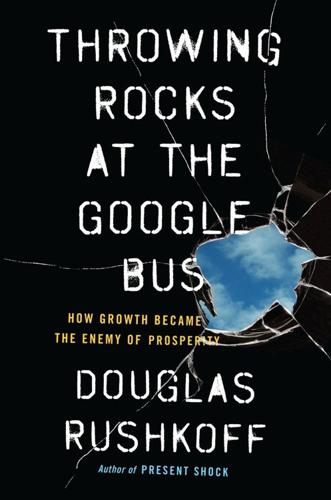
Throwing Rocks at the Google Bus: How Growth Became the Enemy of Prosperity
by
Douglas Rushkoff
Published 1 Mar 2016
From the funder’s perspective, Kickstarter and its peers count as “investment” only in the grander sense. The platforms don’t let backers reap financial rewards, no matter how well the comics, movies, and products they have funded end up doing in the marketplace. For example, when the Kickstarter community provided Oculus Rift with $2.4 million to develop an immersive virtual-reality headset for video games, the crowdfunders didn’t share in the payoff, or the jubilation, when the company was acquired a year later by Facebook for an astounding $2 billion. Sure, those who paid $250 or more got the VR kit they purchased, but the thousand or so people who gave less than $250 didn’t even get an unassembled prototype kit—just commemorative T-shirts and posters, the sorts of premiums they’d get if they were subscribing to a public radio station.
…
Mike Masnick, “Larry Lessig Launches Crowdfunded SuperPAC to Try to End SuperPACs,” techdirt.com, May 1, 2014. 58. Jeremy Parish, “How Star Citizen Became the Most Successful Crowd Funded Game of All Time,” wdc.com, January 13, 2015. 59. Rory Carroll, “Silicon Valley’s Culture of Failure . . . and ‘the Walking Dead’ It Leaves Behind,” theguardian.com, June 28, 2014. 60. Steven Poole, “What Does the Oculus Rift Backlash Tell Us? Facebook Just Isn’t Cool,” theguardian.com, March 27, 2014. 61. Nicholas Carson, “The Good, Bad, and Ugly of AngelList Syndicates,” inc.com, September 30, 2013. 62. MicroVentures, “The 5 Keys to Becoming a MicroVentures Angel Investor” (sponsored content), venturebeat.com, January 1, 2014. 63.
…
Clean Magic Eraser, 107 music industry, 100 positive reinforcement feedback loop and, 28 power-law dynamics and, 26–27 360 deals and, 34 Musk, Elon, 121 Myspace, 31 Nakamoto, Satoshi, 143, 145 National Commission on Technology, Automation and Economic Progress, 52–53 negative income tax, 64 Neilsen Soundscan, 26–27 Nelson, Jonathan, 26 Nelson, Matthew, 25, 26 Netflix, 29, 48 New Deal, 99 New York Stock Exchange (NYSE), 182 New York Times,37–38, 87, 177 99designs, 200 Nixon, Richard, 63 not-for-profits (NFPs), 121–23 obsolescence Amazon business model and, 89–90 corporations and, 70–71, 73 employment opportunities, technology as replacing and obsolescing, 51–54 Occupy Wall Street movement, 100, 152, 153 Oculus Rift, 201 offshoring, 78–79 Olen, Helaine, 170 OMGPop, 192, 193 online trading platforms, 176–78 open-source corporate strategies, 106–7 Open Source Ecology project, 217 Organic, Inc., 26 Ostrom, Elinor, 216 Pacific Lumber Company, 117 Palmer, Amanda, 38–39, 199 PandoDaily, 197–98 Pandora, 34, 218 Parker, Sean, 191–92 PayPal, 140–41 paywalls, 37–38 peer-to-peer economy/marketplaces, 16–17, 18 alternative corporate models for fostering, 93–97 Bandcamp and, 29–30 central currency as means of shutting down, 128–29 digital transaction networks and, 141 distribution of ability to create and exchange value by, 29–30 eBay and, 29 Known business model versus Blackboard’s in fostering, 95–97 obsolescence of, as effect of corporations, 70–71, 73 Sidecar business model versus Uber’s in fostering, 93–94 pensions, 170–71 Perez, Carlota, 98, 99 personhood, of corporations, 72, 73–74 Amazon and, 90 artificial intelligence and, 91 perspective painting, 235 Piketty, Thomas, 53–54, 131 Pitbull, 36 Pius X, Pope, 228–29, 230 platform cooperatives, 220–23 platform monopolies, 82–93, 101 acceleration in extraction of value and opportunity from economy and, 92–93 Amazon (publishing industry) and, 87–90 becoming entire environment and, 87 creative destruction and, 83–87 distributive alternatives to, 93–97 Uber (transportation industry) and, 85–87 Plum Organics, 119 Poole, Steven, 201 populists, 99–100 positive reinforcement, 28 Pound Foolish (Olen), 170 power-law distribution, 26–29, 30 precious metals currencies, 128 present shock, 6 price gouging, 86 privatization, 114–16 Proctor & Gamble, 107–8 productivity gains corporations failure to capitalize on, 77 great decoupling and, 53 income disparity and, 53–54 sharing of, with employees, 60–62 Prosper Marketplace, 203, 204 publishing industry, 87–89 Publix Super Markets, 117–18 quantitative easing, 137 Quirky, 199 Reagan, Ronald, 64 Real Pickles, 205–6 Renaissance, 45, 71, 230, 235–37 repatriation of jobs, 80 retirement savings plans, 170–75 fees and commissions charged for, 173–74 financial services industry and, 171–73, 175 401(k) plans and, 171–74 individual retirement accounts (IRAs), 171 pension accounts and, 170–71 performance of, 173–75 retrieval, 71–72, 73 return on assets (ROA), 76–77 Rifkin, Jeremy, 62 Roaring Twenties, 99 robotic ad-viewing programs, 37 Rolling Jubilee, 153 Rosenberg, Dan, 205–6 Rothschild, Lynn Forester de, 111 Ryan, Paul, 138 Ryan, William F., 63 Santa Barbara Missions, 156 scarcity, 62 Scholz, Trebor, 50, 223 Schor, Juliet, 58 Schumpeter, Joseph, 83, 84, 85 Second Machine Age, The (Brynjolfsson & McAfee), 23 secrecy, 106–7 seed-sharing networks, 217 self-help cooperatives, 159 Series A round of investment, 188–89 shareholder.

The Network Imperative: How to Survive and Grow in the Age of Digital Business Models
by
Barry Libert
and
Megan Beck
Published 6 Jun 2016
Matthew Brunwasser, “A 21st-Century Migrant’s Essentials: Food, Shelter, Smartphone,” New York Times, August 25, 2015, http://mobile.nytimes.com/2015/08/26/world/europe/a-21st-century-migrants-checklist-water-shelter-smartphone.html?_r=0. 2. Yegge’s comments have been reposted with permission on Google+, https://plus.google.com/+RipRowan/posts/eVeouesvaVX. 3. This and the following remarks are Simon Parkin, “What Zuckerberg Sees in Oculus Rift,” MIT Technology Review, March 26, 2014, https://www.technologyreview.com/s/525881/what-zuckerberg-sees-in-oculus-rift/. 4. Julie Bort, “Cisco Chairman John Chambers Has an Idea for How the US Can Create Another 1 Million Jobs,” Business Insider, September 30, 2015, http://www.businessinsider.com/cisco-chairman-john-chambers-has-idea-to-create-1-million-us-jobs-a-year-2015-9.

Marx at the Arcade: Consoles, Controllers, and Class Struggle
by
Jamie Woodcock
Published 17 Jun 2019
The independently developed (indie) game Minecraft sold an astonishing 144 million copies (across multiple platforms, with a high of 74 million monthly players), and the developer was purchased by Microsoft for $2.5 billion.84 The crowdfunding platform Kickstarter provided a new way for developers to raise money for games, shifting the business model of many titles. In addition to games, hardware like the virtual reality headset Oculus Rift were also funded this way. A growing number of games—including Gone Home, The Last of Us, and Papers, Please— began dealing with ethics and more mature themes. Today, many games offer regular downloadable content (DLC), extending or expanding the game for additional cost. Massively successful games like Dota 2, League of Legends, CrossFire, Clash of Clans, and World of Tanks are built on a so-called free-to-play model, in which the game itself is offered for free, but the consumer can purchase cosmetic in-game items (and sometimes things like “experience boosts”) for much less than the cost of a typical game, in what are known as “microtransactions.”
…
S., 19 Douglas, Dante, 94 Draper, Hal, 132 Duke Nukem, 2, 29 Dune II, 28 Dungeon Fighter Online, 38 Dungeon Keeper, 2 Dungeons & Dragons, 2, 23, 25, 125 Dye, Dale, 116 Dyer-Witheford, Nick, 15–16, 19, 21, 29, 37, 46, 86, 106, 160 Dyson, Jon-Paul, 127 E Eagleton, Terry, 109, 111 EA Sports, 39 Edinburgh, 40 EDSAC, 19 Ehrhardt, Michelle, 96 The Elder Scrolls, 125 Electronic Arts, 46–47, 50–51, 82–84, 93 Engels, Friedrich, 67, 108–10, 132 England, 67, 138 Epic Games, 33 Esposito, Nicolas, 13 E.T. the Extra Terrestrial, 26 Eugen Systems, 94 EuroMayDay, 142 Europe, 38–39, 116 EVE Online, 149 EverQuest, 30 Every day the same dream, 142–43 F Facebook, 31, 96 Fallout, 2, 24, 126 Famicom, 27 Farmville, 31 Feenberg, Andrew, 114 Ferris, Rupert, 4–5 FIFA 17, 39 Financial Times, 144–45 First World War, 117–18 Fisher, Sam, 120–21 Fleming, Ian, 115 Football Manager, 42 Forbes, 147 Fordism, 23 Fortnite, 33, 38 Foxconn, 141 France, 57, 68, 94–95, 99 Freeman, Gordon, 121 French Revolution, 4 Frye, Jacob and Evie, 4–6, 63 Full Spectrum Warrior, 54 F-Zero, 28 G Gagné, Jean-François, 80 GAME, 48, 50 Game Boy, 27–28, 29, 152 Game Boy Advance, 30 Game Boy Color, 28 GameCube, 30 Game Developers Conference, 95, 96, 98, 99 Game Dev Story, 61–64, 75 Game of Life, 22 Gamergate, 154–55, 161–62 Games London, 42 Games of Empire, 15 Game Workers Unite, 96–100, 102, 160, 163 GEORGINA, 24 Germany, 39, 98, 110, 142 Global North, 42, 44, 71, 140, 148 Global South, 37 God of War: Ghost of Sparta, 82 GoldenEye 007, 115–16, 120, 149 Gone Home, 32 Good, Owen, 117, 119 Google, 47, 147 Google Play, 147 Graeber, David, 148 Grand Theft Auto, 71 Grand Theft Auto V, 39–40, 43–44 Greenbaum, Joan, 78 Green, Joshua, 155 Guild Wars 2, 155 Gulf War, 118–119 H Habert, Félix, 95 Half-Life, 31, 70, 121, 159 Half-Life 2, 52 Hall, Stuart, 1, 161 Halo, 120 Halo: Combat Evolved, 30 Halt and Catch Fire, 23 Hamurabi, 23 Harvey, David, 67 Hernandez, Patricia, 137 Hewlett Packard, 32 Hexapawn, 23 Higinbotham, William, 20, 22 Hirsch, Marianne, 118 Hitchens, Michael, 115 Hitler, Adolph, 115 Hollis, Martin, 58 Hollywood, 116, 135 Home Pong, 22–23 Huizinga, Johan, 14–16, 148 Huntemann, Nina, 113 Hutspiel, 19 I IBM, 19, 29 IBM 701, 19–20 IBM 704, 20 IBM 1620, 20 Independent Workers Union of Great Britain, 102 Industrial Revolution, 4 International Alliance of Theatrical Stage Employees, 96 International Center for the History of Electronic Games, 127 International Game Developers Association, 74, 84, 87–88, 95–97 Internet Gaming Entertainment, 154–55 IRA, 57 Iran-Contra scandal, 119 Iraq, 118 Italy, 69 iTunes, 140 J Japan, 24–27, 30, 39, 114 John Madden Football, 27 Johnson, Boris, 40–42 Johnson, Mark R., 147 Jørgensen, Kristine, 122 Joseph, Daniel, 26, 52–53, 123–24 Jung, Carl, 135 K Kasparov, Garry, 29 Kassar, Ray, 152 Kemeny, John, 21–22 Kerr, Aphra, 43 Kickstarter, 32, 45 Kirkpatrick, Graeme, 78 Kotaku, 64–65 Kraft, Philip, 78 Kunkel, Bill, 12 L Labour Party, 145 Lamia, Mark, 119 The Landlord’s Game, 138 The Last of Us, 32 League of Legends, 32, 38, 70, 146, 150–51, 154, 156–57 Leblanc, David, 142 Lebowitz, Michael, 68 Lees, Matt, 155 The Legend of Zelda, 27, 28 Le, Minh, 70 Lemmings, 1 Lind, Maria, 144 London, 4–6, 41, 63, 105, 128, 146 Lumino City, 42 Lunar Lander, 24 M MacLean, Jen, 95–97 Magie, Elizabeth, 138 Magnavox, 22 Mandel, Ernest, 106–7 Manhattan Project, 19, 22 Marine Doom, 54 Mario, 2, 25, 27 Marxism, 3, 8, 12, 67, 159–62 crisis of overproduction and, 26 Eagleton on, 111 labor and, 63 Mandel on, 106–7 on mass culture, 107–8 Ollman and, 137 revolution and, 108 socialism from below and, 132–33 Marx, Karl, 17, 36, 64, 108–10, 139 in Assassin’s Creed Syndicate, 3–8, 63, 66–67, 163 Capital, 8, 53, 67–69, 74 on commodities, 47 materialism of, 129, 133 on ruling ideas, 132 on surplus, 85 MayDay NetParade, 142 May, Theresa, 145 Maze War, 23 McGonigal, Jane, 148 McLuhan, Marshall, 17–18 Medal of Honor, 116 Medal of Honor: Warfighter, 56 Mega Drive / Genesis, 28 Meier, Sid, 129–31, 147 Metal Gear Solid, 2 Microsoft, 30–32, 39, 46 Middle East, 122 Midvale Steel Company, 76 Miles, Desmond, 3–4 Miller, Monica K., 153 Minecraft, 32, 47 MIT, 20–21 Modular One, 24 Molleindustria, 13, 140, 141, 142 Monopoly, 137–38 Monument Valley, 40 Mortal Kombat, 28 Mouse in the Maze, 20 MS-DOS, 1, 105, 106 Muncy, Julie, 117 N Namco, 25 NASA, 42 National Health Service, 42, 145 NATO, 19 Navy SEALs, 56 Nazis, 115 Nearing, Scott, 138 NetEase, 47 New Left, 21 New York, 18, 137, 139 Nexon/Tencent, 38 Ngai, Pun, 73 Niantic, 147 Nicaragua, 119 Nieborg, David, 48, 51 Night in the Wood, 96 Nim, 18, 23 Nimatron, 18 Nintendo, 25–28, 30, 32, 47, 101, 147, 152 Nintendo 64, 28, 32, 115–16 Nintendo Classic Mini Entertainment System, 27 Nintendo Classic Mini Super Nintendo Entertainment System, 28 Nintendo DS, 30 Nintendo Entertainment System, 27 Nintendo Game Boy, 2 North America, 38–39 North, Oliver, 119 Notes from Below, 69, 86, 92, 97, 160 O Oculus Rift, 32 Odyssey, 22 Ollman, Bertell, 137–40 Oregon Trail, The, 22 Origin (EA), 51 Osborne, George, 42 Overwatch, 39 Owen, Wilfred, 117 P Pac-Man, 25 Pajitnov, Alexey, 28 Pakistan, 140 Palestine, 122 Papers, Please, 32, 143 Parkin, Simon, 56 Patterson, Jimmy, 116 Payne, Matthew, 119–20 Pedercini, Paolo, 140, 142 Perfect World Games, 53 de Peuter, Greig, 15–16, 19, 21, 29, 46, 86, 106, 160 Philippines, 41 Phone Story, 140–41 Player Unknown’s Battlegrounds, 38–39 PlayStation, 2, 28, 30, 31, 50, 116, 152 PlayStation 2, 30 PlayStation 3, 30 PlayStation 4, 31, 50 PlayStation Portable, 30 Pokémon GO, 147 Pong, 20, 22 Populous, 31, 127 Prado, Jason, 92 Price, Jessica, 155 Probst, Larry, 83 PS4 Pro, 31 Punch the Trump, 145 Q Quake 2, 70 Quinn, Zoë, 154 R Raytheon, 20–21 Ready at Dawn, 82 Riot Games / Tencent, 38 Roarem Castle, 138 Rockefeller, Nelson, 139 Rockstar, 39, 71 Rockstar North, 40 Rocksteady Studios, 40 Royal Ulster Constabulary, 57 Russell, Steve, 21, 22 Russia, 115, 118–19, 132 Ryse, 86 S SAG-AFTRA, 91, 93, 94, 99 Salen, Katie, 15 Samuel, Arthur, 20 San Francisco, 95 Sarkeesian, Anita, 154 Saving Private Ryan, 116 Scientific American, 22 Screen Actors Guild, 91 Sears Roebuck, 22 Seattle, 91 Second World War, 27, 116–18 Sega, 27, 28, 30 Sega Genesis, 31 Senate, 29 Shannon, Claude, 18–19, 29 Shaw, Carol, 151–52 A Short History of the Gaze, 142 Short, Tanya, 85–86 Silicon Valley, 23, 99 SimCity, 2, 31, 128–29 SimCopter, 2 Sims, The, 31, 127–28 Smilegate/Tencent, 38 Solitaire, 28 Sonic, 2, 27 Sonic the Hedgehog, 28, 97 Sony, 27, 28, 30–32, 39, 46, 82, 152 Sony Online Entertainment, 30 South Armagh Brigade, 57 South Korea, 27 Soviet Union, 19–21, 28 Space Invaders, 24–25 Spacewar!

Dawn of the New Everything: Encounters With Reality and Virtual Reality
by
Jaron Lanier
Published 21 Nov 2017
It was also the first color, head-supported VR headset, even counting ones from research labs, so far as I know. EyePhones were great! I can still remember the glow of anticipation I used to experience every time I was about to put one of them on. As objects, the earliest ones looked a little like the present-day Oculus Rift. They were black, had Velcro bands, and stuck out a fair amount. Subjectively the visual experience was most like the present-day Sony PlayStation VR headset. EyePhones revealed the virtual world with a similar diffused visual quality. The worst problem with the early EyePhones was probably the weight.
…
• Texture, timing, distribution, and other qualities of pixels should either be imperceptible or pleasant. • Inexpensive enough for practical use. The above list is only for classical, occlusive headsets where all you see is virtual stuff. Examples include the original VPL EyePhones and more recent products like the Oculus Rift or the HTC Vive. If we’re talking about headsets for mixed reality, like HoloLens, then the wish list grows longer and the requirements shift. Mixed-reality headsets are much, much harder to design. Chapter 16 1. Valve is one of the companies that leapt into VR in the twenty-teens revival.
…
See phenotropic programming neuroscience Neven, Hartmut New Age philosophy New Economy New Mexico New Mexico State Fair New Mexico State University (NMSU) news, real vs. online and “fake” New York New York City New York Times Nintendo NIST agency Nonesuch label noninteractive VR experiences nonviolent action noosphere Normcore look North Indian classical raga Nostrildamus Notwellian talk nuclear power Oakland high schools Oberheim, Tom octopus. See also cephalopods Octopus Butler Robot Oculus Oculus Rift oil exploration olfaction Olympics Ono, Yoko open-source movement operating system, first commercial optical bench optical sensors optic nerve optimizing compiler options for action, biasing Oracle Organ Mountains organomania origami oscillators oscilloscope pain management Palestine, Charlemagne Palo Alto Paracomp paralyzed bodies paranoia Parrish, Maxfield Pascal’s Wager patents Patricof, Alan pattern recognition Patterson, Penny Pauline, Mark Pausch, Randy Pavlov, Ivan PDP-11 computer Peace Prize of the German Book Trade Pentland, Sandy perception pereiopods perfection peripheral vision Perlin, Ken Perry, Commodore personal computers personal data, commerce and personal thinking Pfizer Phantom device phantom limbs phenotropic programming Philco photography photons physical reality physical therapy physics Piaget, Jean piano Piestrup, Ann McCormick pinnae Pixar Pixel Planes pixels Plants as Inventors (book) Platonic images Platonic sizzle Platonic Solids Pleiades Pluto Pocket Big Brain pointing and selecting on screen Polhemus Porras Luraschi, Javier postsymbolic communication poverty Power Glove power relationships Prime Directive printers Prisoner’s Dilemma privacy productivity software Programmers at Work (book) programming.

Machine, Platform, Crowd: Harnessing Our Digital Future
by
Andrew McAfee
and
Erik Brynjolfsson
Published 26 Jun 2017
The indoor cycling company Peloton sells a $1,995 stationary bike that has a Wi-Fi-enabled twenty-two-inch screen enabling riders to remotely stream live spin classes (there are least ten every day) with real instructors, as well as a back catalog of on-demand sessions, from their own home. In February 2016, Peloton announced it was working with Oculus Rift on a virtual reality headset that could replace the need for the screen. Mark Prigg, “Now You Can Track Your Gym Sessions Too: Peloton Teams Up with Strava App to Monitor Spin Classes—and Says It Is Also Working on Oculus Rift VR Workouts,” DailyMail.com, February 18, 2016, http://www.dailymail.co.uk/sciencetech/article-3452996/Now-track-gym-sessions-Peleton-teams-Strava-app-monitor-spin-classes-says-working-Oculus-Rift-VR-workouts.html. † The US Civil Aeronautics Board was established in 1938 to regulate the airline industry.
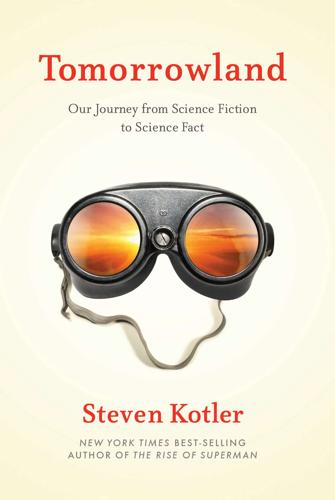
Tomorrowland: Our Journey From Science Fiction to Science Fact
by
Steven Kotler
Published 11 May 2015
But if the physicist had been hooked up to the Soul Catcher — which would record his life — and the Soul Catcher was further connected to some sort of total experience playback device, this might make his A + B = Z intuition not just knowable, but experienceable — meaning teachable. Of course, it would have to be a really powerful playback device like, say, the virtual reality systems that are now hitting the market. Cochrane envisions a Tomorrowland version of the Oculus Rift, meaning not the VR system that Facebook just bought for a billion dollars, but the one that’s going to emerge after they spend another billion developing the technology. But the larger point is that the playback device completes the picture. With a robust brain-computer interface, a chip capable of capturing experience, and a damn powerful playback device, the system is in place.
…
See also evolution Nature Review Genetics, 56 near-death experiences, 37–45 brain changes after, 43–45 Near Earth Asteroid Rendezvous (NEAR) Shoemaker, 146 nervous system incorporation of implants in, 25–26 neurobiology of mystical experiences, 45–48 near-death experiences and, 43–45 of vision implants, 64–65 Nevulis, Rick, 88, 89 Newberg, Andrew, 45–47 Newman, Jana, 91 Nicholson, Jack, 169 99Virions, 222 nitrous oxide, 168 Nixon, Richard, 170 Nolan, Christopher, 27 Normann, Dick, 74–75 Northwest Andrology, 257 nuclear energy, 107–23 breeder reactors in, 117–18 cost of licensing, 111 disasters in, 110, 116, 117, 119, 122–23 early history of, 109–10 economics of, 112–13 environmental impact of, 113–14 fast reactors for, 116–19 fuel recycling for, 115–16 Integral Fast Reactors, 118 Liquid Fluoride Thorium Reactors, 119–20 reactor types for, 114, 116–23 reconsideration of, 110–15 renewables vs., 111–12 safety of, 111–12, 116–17, 118, 121, 122–23 Small Scale Nuclear Reactors, 119, 121 traveling wave reactors, 121 waste from, 114–15, 119 Nuclear Regulatory Commission, 122 nuclear weapons, 115, 119 nuns, oneness with the universe of, 45–47 NuScale Power, 121 Oak Ridge National Laboratory, 120 Obama, Barack on asteroid exploration, 149 DNA of protected, 224 on nuclear energy, 111, 122 threats against, 238 obesity, 56 O’Brochta, David, 137 obsessive-compulsive disorder (OCD), 162, 163 Oculus Rift, 30 Ohme, Chloe, 259 oil resources, 111, 113, 148 Oncos Therapeutics, 225 optic nerve, in near-death experiences, 41–42 organized crime, 235–36 Ortiz, Deborah, 212 Osmond, Humphry, 169 Ossur, 15 out-of-body experiences. See extreme states Pacala, Stephen, 114 Page, Larry, 145 paranormal, 36.

The Glass Cage: Automation and Us
by
Nicholas Carr
Published 28 Sep 2014
As for the audio signals that announce incoming alerts and messages—sent, as Brin boasted in his TED talk, “right through the bones in your cranium”—they hardly seem less intrusive than the beeps and buzzes of a phone. However emasculating a smartphone may be, metaphorically speaking, a computer attached to your forehead promises to be worse. Wearable computers, whether sported on the head like Google’s Glass and Facebook’s Oculus Rift or on the wrist like the Pebble smartwatch, are new, and their appeal remains unproven. They’ll have to overcome some big obstacles if they’re to gain wide popularity. Their features are at this point sparse, they look dorky—London’s Guardian newspaper refers to Glass as “those dreadful specs”25—and their tiny built-in cameras make a lot of people nervous.
…
J., 146–47, 229–30 meaning, 123, 220 medical diagnosis, 10, 12, 70–71, 105, 113–15, 120, 123, 154, 155 Medicare, 97 Mehta, Mayank, 219–20 Meinz, Elizabeth, 83 Meister, David, 159 memory, 72–75, 77–80, 84, 151 drawing and, 143 navigation and, 129–30, 133–37 Men and Machines, 26 mental models, 57 Mercedes-Benz, 8, 136–37, 183 Mercury astronauts, 58 Merholz, Peter, 180 Merleau-Ponty, Maurice, 216, 217–18, 220 metalworkers, 111 mice, dancing, 87–92 microchips, 8, 114 microlocation tracking, 136 Microsoft, 195 military, 35–37, 47, 49, 158, 159, 166, 174 robots and, 187–93 mind, 63, 121–24, 201, 213–14, 216 body vs., 48–51, 215, 216 computer as metaphor and model for, 119 drawing and, 143, 144 imaginative work of, 25 unconscious, 83–84 Mindell, David, 60, 61 Missionaries and Cannibals, 75, 180 miswanting, 15, 228 MIT, 174, 175 Mitchell, William J., 138 mobile phones, 132–33 Moore’s Law, 40 Morozov, Evgeny, 205, 225 Moser, Edvard, 134–35 Moser, May-Britt, 134 motivation, 14, 17, 124 “Mowing” (Frost), 211–16, 218, 221–22 Murnane, Richard, 9, 10 Musk, Elon, 8 Nadin, Mihai, 80 NASA, 50, 55, 58 National Safety Council, 208 National Transportation Safety Board (NTSB), 44 natural language processing, 113 nature, 217, 220 Nature, 155 Nature Neuroscience, 134–35 navigation systems, 59, 68–71, 217 see also GPS Navy, U.S., 189 Nazi Germany, 35, 157 nervous system, 9–10, 36, 220–21 Networks of Power (Hughes), 196 neural networks, 113–14 neural processing, 119n neuroergonomic systems, 165 neurological studies, 9 neuromorphic microchips, 114, 119n neurons, 57, 133–34, 150, 219 neuroscience, neuroscientists, 74, 133–37, 140, 149 New Division of Labor, The (Levy and Murnane), 9 Nimwegen, Christof van, 75–76, 180 Noble, David, 173–74 Norman, Donald, 161 Noyes, Jan, 54–55 NSA, 120, 198 numerical control, 174–75 Oakeshott, Michael, 124 Obama, Barack, 94 Observer, 78–79 Oculus Rift, 201 Office of the Inspector General, 99 offices, 28, 108–9, 112, 222 automation complacency and, 69 Ofri, Danielle, 102 O’Keefe, John, 133–34 Old Dominion University, 91 “On Things Relating to the Surgery” (Hippocrates), 158 oracle machine, 119–20 “Outsourced Brain, The” (Brooks), 128 Pallasmaa, Juhani, 145 Parameswaran, Ashwin, 115 Parameters, 191 parametric design, 140–41 parametricism, 140–41 “Parametricism Manifesto” (Schumacher), 141 Parasuraman, Raja, 54, 67, 71, 166, 176 Parry, William Edward, 125 pattern recognition, 57, 58, 81, 83, 113 Pavlov, Ivan, 88 Pebble, 201 Pediatrics, 97 perception, 8, 121, 130, 131, 132, 133, 144, 148–51, 201, 214–18, 220, 226, 230 performance, Yerkes-Dodson law and, 96 Phenomenology of Perception (Merleau-Ponty), 216 philosophers, 119, 143, 144, 148–51, 186, 224 photography, film vs. digital, 230 Piano, Renzo, 138, 141–42 pilots, 1, 2, 32, 43–63, 91, 153 attentional tunneling and, 200–201 capability of the plane vs., 60–61, 154 death of, 53 erosion of expertise of, 54–58, 62–63 human- vs. technology-centered automation and, 168–70, 172–73 income of, 59–60 see also autopilot place, 131–34, 137, 251n place cells, 133–34, 136, 219 Plato, 148 Player Piano (Vonnegut), 39 poetry, 211–16, 218, 221–22 Poirier, Richard, 214, 215 Politics (Aristotle), 224 Popular Science, 48 Post, Wiley, 48, 50, 53, 57, 62, 82, 169 power, 21, 37, 65, 151, 175, 204, 217 practice, 82–83 Predator drone, 188 premature fixation, 145 presence, power of, 200 Priestley, Joseph, 160 Prius, 6, 13, 154–55 privacy, 206 probability, 113–24 procedural (tacit) knowledge, 9–11, 83, 105, 113, 144 productivity, 18, 22, 29, 30, 37, 106, 160, 173, 175, 181, 218 professional work, incursion of computers into, 115 profit motive, 17 profits, 18, 22, 28, 30, 33, 95, 159, 171, 172–73, 175 progress, 21, 26, 29, 37, 40, 65, 196, 214 acceleration of, 26 scientific, 31, 123 social, 159–60, 228 progress (continued) technological, 29, 31, 34, 35, 48–49, 108–9, 159, 160, 161, 173, 174, 222, 223–24, 226, 228, 230 utopian vision of, 25, 26 prosperity, 20, 21, 107 proximal cues, 219–20 psychologists, psychology, 9, 11, 15, 54, 103, 119, 149, 158–59 animal studies, 87–92 cognitive, 72–76, 81, 129–30 psychomotor skills, 56, 57–58, 81, 120 quality of experience, 14–15 Race against the Machine (Brynjolfsson and McAfee), 28–29 RAND Corporation, 93–98 “Rationalism in Politics” (Oakeshott), 124 Rattner, Justin, 203 reading, learning of, 82 Reaper drone, 188 reasoning, reason, 120, 121, 124, 151 recession, 27, 28, 30, 32 Red Dead Redemption, 177–78 “Relation of Strength of Stimulus to Rapidity of Habit-Formation, The” (Yerkes and Dodson), 89 Renslow, Marvin, 43–44 Revit, 146, 147 Rifkin, Jeremy, 28 Robert, David, 45, 169–70 Robert Frost (Poirier), 214 Roberts, J.
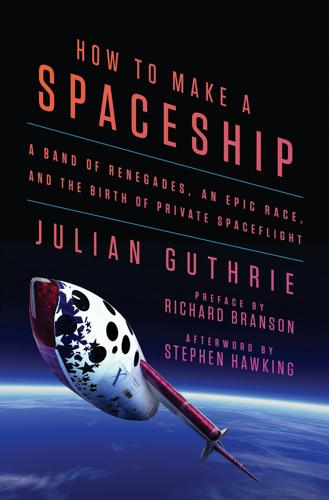
How to Make a Spaceship: A Band of Renegades, an Epic Race, and the Birth of Private Spaceflight
by
Julian Guthrie
Published 19 Sep 2016
He explained, “Once it became people’s jobs, they had other hobbies—go-karts and model airplanes and other distractions. When it was two days a week, everyone was much more focused on really getting things done. We started doing work with NASA and there were blueprints and diagrams and technical reviews. It slowed the team down.” Carmack, who is now the CTO of Oculus Rift, says, “There are still aerospace ideas that interest me, so there is a decent chance that I will return to try again after virtual reality is all sorted out. I don’t regret any of the work. We didn’t achieve all the goals we wanted, but we took a good shot at it.” —When the XPRIZE was won and entrepreneurs including Branson, Musk, and Bezos were starting private space companies, Argentinian Pablo de León looked around and realized there would be a need for spacesuits for the private sector.
…
There are many others I interviewed for this book, from Elon Musk, Richard Branson, and Paul Allen to NASA’s Dan Goldin and the FAA’s Marion Blakey. I did well over one hundred interviews and many of these people put up with my returning again and again with seemingly infinite questions. I traveled to Dallas to meet with Oculus Rift CTO John Carmack, who was both considerate and exceedingly smart. I met with Russell Blink and the team from Armadillo Aerospace, driving to remote corners of the Lone Star State to find these persistent rocket makers and to see the remnants of their XPRIZE vehicle. I visited Seattle to meet Erik Lindbergh.
…
Louis, 285–91 New York Times, 19, 123 Nicklaus, Jack, 333 9/11 attacks (2001), 280–81, 291 Nitrogen triiodide, 22–23 Nitrous oxide, 1, 3, 308–9, 358–59, 377 Niven, Larry, 227 Nixon, Richard, 20 Nocera, Joe, 237 Noctilucent clouds, 335n North American Aviation, 12 North American X-15, 4–5, 118, 248, 249, 253, 316, 317 Northrop Grumman, 12, 214, 247–48, 408 Noteboom, Bob, 95, 98 Nova 1, 266–69 Nova 2, 370–71 November, Michael, 28–29, 31 Noyce, Robert, 31 Nozette, Stu, 204 Nungesser, Charles, 171 Oberth, Hermann, 24–25, 91, 365 O’Brien, Miles, 381, 382 Oculus Rift, 410 Oman, Chuck, 47–48 Omni (magazine), 34–35, 42–43 O’Neill, Gerry, 41, 91, 104–5, 105n, 122, 126, 212 Orbital Sciences Corporation, 107, 117, 230 Orbital velocity, 13n, 129–30 Orient Express, 120 O-rings, 63, 128 Orteig, Raymond, 123–25, 150, 171 Orteig Prize, 113, 123–24, 140, 144, 169, 171 Pacific American Launch Systems, 130 Pallotta, Dan, 374 Pan Am Airlines, 210 Panlasigui, Angel, 237 Parabolic arc, 4, 4n Paramount Pictures, 292 Parkes Radio Astronomy Observatory, 13 Pascal, Blaise, 90 Pathfinder, 119–20 PayPal, 238 P effect, 162, 162n Pegasus, 107, 108, 117 Pelton, Joe, 75 Pelz, Danny, 21 Petersen, Kevin, 315 Phased orbit, 231, 231n Philippines, 83–84 Piccard, Bertrand, 195, 195n Pickens, Tim, 305–6, 307–10, 352n Piper Cherokees, 91–92 Piper Clubs, 55 Pitch, 198, 198n Planetary Resources, Inc., 406 Planetary Society, 47 Pogue, William, 71 Popescu, Dumitru, 180–81, 276–79, 295, 363–67, 371, 410–11 Popescu, Elena Simona, 276–77, 363–67 Popular Science, 23 Population Bomb, The (O’Neill), 104 Portland Trail Blazers, 201 Potassium perchlorate, 25–26 Pressure suits, 24, 197–98, 198n Price, Frank, 35–37 Princeton Airport, 101, 103 Princeton University, 41–42, 126, 211, 212, 325 Space Studies Institute, 41, 104, 105 Processor Technology, 22 Project Gemini, 11, 48, 118, 168, 314 Project Mercury, 117, 133n, 143, 200 Proteus, 154, 162–63, 196–201, 246 Prunariu, Dumitru, 277–78, 364–65 Purdue University, 324–25 Quark Expeditions, 208 Quarks, 29, 29n Raburn, Vern, 199–201 Radar, 28, 57 Raptor (Responsive Aircraft Program for Theater OpeRations), 159–61, 160n Ray, E.

The Sharing Economy: The End of Employment and the Rise of Crowd-Based Capitalism
by
Arun Sundararajan
Published 12 May 2016
Marketplaces that enable the rental of expensive equipment owned by people who aren’t very wealthy might represent a new pocket of opportunity. For example, KitSplit, funded in 2014 by NYU students Lisbeth Kaufman and Katrina Budelis, is a peer-to-peer rental marketplace for independent filmmakers to get cameras, lenses, Oculus Rift headsets, and other professional equipment from each other. But as of late 2015, other success stories that have scaled are hard to find, and peer-to-peer rental activity is often conducted through bulletin-board-esque services like Alan Berger’s NeighborGoods. Many others have successfully facilitated household asset rental using a different, more traditional form of organizing short-term borrowing: the library.
…
For example, independent filmmakers may often own expensive filmmaking and photography equipment that represents a very high percentage of their income. Similarly, early adopters of “creative equipment” who spend a lot of their money on new and “cool” products may purchase products like the 2013 Oculus Rift. As I discussed in the introduction, KitSplit is a peer-to-peer rental market for this kind of equipment. Additionally, most items, even those with status appeal, transmit worth through what I refer to as “consumption value”—you get value by using your iPhone, for instance, or by wearing a Rolex.
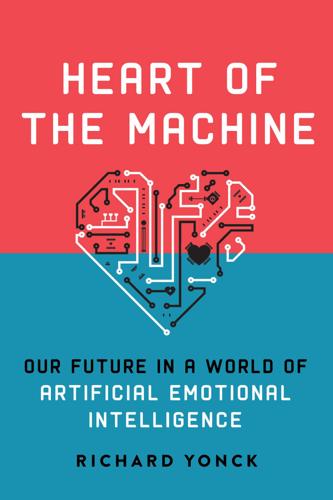
Heart of the Machine: Our Future in a World of Artificial Emotional Intelligence
by
Richard Yonck
Published 7 Mar 2017
Many different technologies are being enlisted to extend the growing universe of sexual activities. Virtual reality (VR) offers the potential for experiencing fantasies in a reasonably safe and unthreatening environment. VR can be incredibly immersive, particularly when using head-mounted displays such as Oculus Rift or HTC Vive. VR worlds are already rife with opportunities for sexual activities, including prostitution of a sort. Users have been able to engage in virtual sex in online brothels for years, such as those found throughout Linden Labs’ virtual world, Second Life. Whether this can truly be categorized as sex, and therefore prostitution, remains a blurry line, but as time passes and these experiences become increasingly realistic, it seems likely this distinction could diminish.
…
See massive open online courses (MOOCs) Moodies, 72 Moore, Gordon, 38 Moore’s law, 38–40, 147 Mor, Yuval, 72, 76–77 Mori, Masahiro, 96–98 Moss, Frank, 62 MP3, 210 Mukai, Toshiharu, 152 Musk, Elon, 263–264 My Real Baby, 200 Myriad Genetics, 75 N Nadine, 87 Nanyang Technological University, 87 NAO, 112–113, 152 Napster, 210 NASA Ames Research Center, 256 NASA Space Technology 5 (ST5) antennas, 256 Nass, Clifford, 28, 50 National Center on Elder Abuse, 155–156 National Science Foundation, 60 NDR-113 (Andrew), 232 Negroponte, Nicholas, 52 Nemesysco, 73 neural networks, 67–68 NeuroSky, 213 neurotransmitters, 186, 187, 190, 216, 220, 221 “New Strategy for Robots,” 151 Nexi - MDS(mobile-dexterous-social) robot, 85 Next-Generation Identification, 144 1984, 229 Noldus, 72 nonverbal communication, 25–26 North Carolina State University study (2013), 114 Norvig, Peter, 39 O objectophilia, 186–188 Objectùm-Sexuality Internationale, 187 Oculus Rift, 189 Office Assistant, 51–52 Office for Windows, 51 Official Secrets Act, 37 online training systems, 120–121 Ono, 88 “Onslaught (Dove),” 69–70 open source EEG projects, 126 opsins, 213–214 optogenetics, 213–214, 218 On the Origin of Species (Darwin), 228 Orwell, George, 229 OS ONE, 195 “otherness,” 106 oxytocin, 16, 186, 196 P P-consciousness.
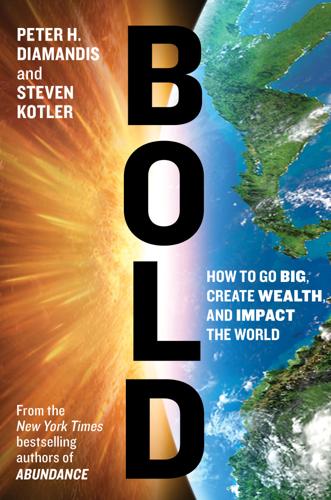
Bold: How to Go Big, Create Wealth and Impact the World
by
Peter H. Diamandis
and
Steven Kotler
Published 3 Feb 2015
In this case, a successful crowdfunding campaign has two advantages: providing non-dilutive capital to grow the company in the early days, and allowing the company to command a higher valuation in its venture round. Just look at the results achieved by the Pebble Watch team, raising $15 million in venture funding twelve months after their campaign. Even more impressive, Oculus Rift went from raising $2.4 million on Kickstarter to being acquired by Facebook for $2 billion in just eighteen months.19 • The development of a paying community of customers. There is enormous value in building and having access to a community of paying customers, yet this is very difficult to do in a normal marketplace, and almost impossible to accomplish before your product is released
…
R., 27 LIDAR, 43–44, 44 life-extension projects, 66, 81 Li’l Abner (comic strip), 71 Lincoln, Abraham, 109, 194 Lindbergh, Charles, 112, 244, 245, 259–60 linear growth, 7, 9 linear industries, 38, 116 exponential technologies in disrupting of, 17, 18–22 linear organizations, 15, 17, 18, 19, 20, 21, 76, 85, 116 LinkedIn, 77, 213, 231 Lintott, Chris, 220 Linux, 11, 163 Littler Workplace Policy Institute, 60 live-streaming, in crowdsourcing campaigns, 207 Lloyd, Gareth, 4 Local Motors, 33, 217, 223–25, 231, 238, 240, 241 Locke, Edwin, 23, 74, 75, 103 Lockheed, 71–72, 75 Lockheed Martin, 249 Longitude Prize, 245, 247, 267 long-term thinking, 116, 128, 130–31, 132–33, 138 Los Angeles, Calif., 258 loss aversion, 121 Louis Pasteur Université, 104 Lovins, Amory, 222 MacCready, Paul, 263 McDowell, Mike, 291n machine learning, 54–55, 58, 66, 85, 137, 167, 216 see also artificial intelligence (AI) Macintosh computer, 72 McKinsey & Company, 245 McLucas, John, 102 Macondo Prospect, 250 macrotasks, crowdsourcing of, 156, 157–58 Made in Space, 36–37 Made to Stick: Why Some Ideas Survive and Others Die (Heath and Heath), 248 MakerBot printers, 39 Makers (Doctorow), 38 MakieLabs, 39 manufacturing, 33, 41 biological, 63–64 digital, 33 in DIY communities, 223–25 robotics in, 62 subtractive vs. additive, 29–30, 31 3–D printing’s impact on, 30, 31, 34–35 Marines, US, 222 Markoff, John, 56 Mars missions, 99, 118–19, 128 Mars Oasis project, 118 Maryland, University of, 74 Maryniak, Gregg, 244 Mashable, 238 massively transformative purpose (MTP), 215, 221, 230, 231, 233, 240, 242, 274 in incentive competitions, 249, 255, 263, 265, 270 mastery, 79, 80, 85, 87, 92 materials, in crowdfunding campaigns, 195 Maven Research, 145 Maxwell, John, 114n Mead, Margaret, 247 Mechanical Turk, 157 meet-ups, 237 Menlo Ventures, 174 message boards, 164 Mexican entrepreneurs, 257–58 Michigan, University of, 135, 136 microfactories, 224, 225 microlending, 172 microprocessors, 49, 49 Microsoft, 47, 50, 99 Microsoft Windows, 27 Microsoft Word, 11 microtasks, crowdsourcing of, 156–57, 166 Mightybell, 217, 233 Migicovsky, Eric, 175–78, 186, 191, 193, 198, 199, 200, 206, 209 Millington, Richard, 233 Mims, Christopher, 290n MIT, 27, 60, 100, 101, 103, 291n mobile devices, 14, 42, 42, 46, 46, 47, 49, 124, 125, 135, 146, 163, 176 see also smartphones Modernizing Medicine, 57 monetization: in incentive competitions, 263 of online communities, 241–42 Montessori education, 89 moonshot goals, 81–83, 93, 98, 103, 104, 110, 245, 248 Moore, Gordon, 7 Moore’s Law, 6–7, 9, 12, 31, 64 Mophie, 18 moral leadership, 274–76 Morgan Stanley, 122, 132 Mosaic, 27, 32, 33, 57 motivation, science of, 78–80, 85, 87, 92, 103 incentive competitions and, 148, 254, 255, 262–63 Murphy’s Law, 107–8 Museum of Flight (Seattle), 205 music industry, 11, 20, 124, 125, 127, 161 Musk, Elon, xiii, 73, 97, 111, 115, 117–23, 128, 134, 138, 139, 167, 223 thinking-at-scale strategies of, 119–23, 127 Mycoskie, Blake, 80 Mycroft, Frank, 180 MySQL, 163 Napoléon I, Emperor of France, 245 Napster, 11 Narrative Science, 56 narrow framing, 121 NASA, 96, 97, 100, 102, 110, 123, 221, 228, 244 Ames Research Center of, 58 Jet Propulsion Laboratory (JPL) of, 99 Mars missions of, 99, 118 National Collegiate Athletic Association (NCAA), 226 National Institutes of Health, 64, 227 National Press Club, 251 navigation, in online communities, 232 Navteq, 47 Navy Department, US, 72 NEAR Shoemaker mission, 97 Netflix, 254, 255 Netflix Prize, 254–56 Netscape, 117, 143 networks and sensors, x, 14, 21, 24, 41–48, 42, 45, 46, 66, 275 information garnered by, 42–43, 44, 47, 256 in robotics, 60, 61 newcomer rituals, 234 Newman, Tom, 268 New York Times, xii, 56, 108, 133, 145, 150, 155, 220 Nickell, Jake, 143, 144 99designs, 145, 158, 166, 195 Nivi, Babak, 174 Nokia, 47 Nordstrom, 72 Nye, Bill, 180, 200, 207 “Oatmeal, the” (web comic), 178, 179, 193, 196, 200 Oculus Rift, 182 O’Dell, Jolie, 238–39 oil-cleanup projects, 247, 250–53, 262, 263, 264 Olguin, Carlos, 65 1Qbit, 59 operational assets, crowdsourcing of, 158–60 Orteig Prize, 244, 245, 259, 260, 263 Oxford Martin School, 62 Page, Carl, 135 Page, Gloria, 135 Page, Larry, xiii, 53, 74, 81, 84, 99, 100, 115, 126, 128, 134–39, 146 thinking-at-scale strategies of, 136–38 PageRank algorithm, 135 parabolic flights, 110–12, 123 Paramount Pictures, 151 Parliament, British, 245 passion, importance of, 106–7, 113, 116, 119–20, 122, 125, 134, 174, 180, 183, 184, 248, 249 in online communities, 224, 225, 228, 231, 258 PayPal, 97, 117–18, 167, 201 PC Tools, 150 Pebble Watch campaign, 174, 175–78, 179, 182, 186, 187, 191, 200, 206, 208, 209, 210 pitch video in, 177, 198, 199 peer-to-peer (P2P) lending, 172 Pelton, Joseph, 102 personal computers (PCs), 26, 76 Peter’s Laws, 108–14 PHD Comics, 200 philanthropic prizes, 267 photography, 3–6, 10, 15 demonetization of, 12, 15 see also digital cameras; Kodak Corporation Pink, Daniel, 79 Pishevar, Shervin, 174 pitch videos, 177, 180, 192, 193, 195, 198–99, 203, 212 Pivot Power, 19 Pixar, 89, 111 Planetary Resources, Inc., 34, 95, 96, 99, 109, 172, 175, 179, 180, 186, 189–90, 193, 195, 201–3, 221, 228, 230 Planetary Society, 190, 200 Planetary Vanguards, 180, 201–3, 212, 230 PlanetLabs, 286n +Pool, 171 Polaroid, 5 Polymath Project, 145 Potter, Gavin, 255–56 premium memberships, 242 PricewaterhouseCoopers, 146 Prime Movers, The (Locke), 23 Princeton University, 128–29, 222 Prius, 221 probabilistic thinking, 116, 121–22, 129 process optimization, 48 Project Cyborg, 65 psychological tools, of entrepreneurs, 67, 115, 274 goal setting in, 74–75, 78, 79, 80, 82–83, 84, 85, 87, 89–90, 92, 93, 103–4, 112, 137, 185–87 importance of, 73 line of super-credibility and, 96, 98–99, 98, 100, 101–2, 107, 190, 203, 266, 272 passion as important in, 106–7, 113, 116, 119–20, 122, 125, 134, 174, 249, 258 Peter’s Laws in, 108–14 and power of constraints, 248–49 rapid iteration and, 76, 77, 78, 79–80, 83–84, 85, 86, 120, 126, 133–34, 236 risk management and, see risk management science of motivation and, 78–80, 85, 87, 92, 103, 254, 255 in skunk methodology, 71–87, 88; see also skunk methodology staging of bold ideas and, 103–4, 107 for thinking at scale, see scale, thinking at triggering flow and, 85–94, 109 public relations managers, in crowdfunding campaigns, 193–94 purpose, 79, 85, 87, 116, 119–20 in DIY communities, see massively transformative purpose (MTP) Qualcomm Tricorder XPRIZE, 253 Quirky, 18–20, 21, 66, 161 Rackspace, 50, 257 Rally Fighter, 224, 225 rapid iteration, 76, 77, 78, 79–80, 83–84, 85, 86, 236 feedback loops in, 77, 83, 84, 86, 87, 90–91, 92, 120 in thinking at scale, 116, 126, 133–34 rating systems, 226, 232, 236–37, 240 rationally optimistic thinking, 116, 136–37 Ravikant, Naval, 174 Raytheon, 72 re:Invent 2012, 76–77 reCAPTCHA, 154–55, 156, 157 registration, in online communities, 232 Reichental, Avi, 30–32, 35 Rensselaer Polytechnic Institute, 4 reputation economics, 217–19, 230, 232, 236–37 Ressi, Adeo, 118 ReverbNation, 161 reward-based crowdfunding, 173, 174–80, 183, 185, 186–87, 195, 205, 207 case studies in, 174–80 designing right incentives for affiliates in, 200 early donor engagement in, 203–5 fundraising targets in, 186–87, 191 setting of incentives in, 189–91, 189 telling meaningful story in, 196–98 trend surfing in, 208 upselling in, 207, 208–9 see also crowdfunding, crowdfunding campaigns rewards, extrinsic vs. intrinsic, 78–79 Rhodin, Michael, 56 Richards, Bob, 100, 101–2, 103, 104 Ridley, Matt, 137 risk management, 76–77, 82, 83, 84, 86, 103, 109, 116, 121 Branson’s strategies for, 126–27 flow and, 87, 88, 92, 93 incentive competitions and, 247, 248–49, 261, 270 in thinking at scale, 116, 121–22, 126–27, 137 Robinson, Mark, 144 Robot Garden, 62 robotics, x, 22, 24, 35, 41, 59–62, 63, 66, 81, 135, 139 entrepreneurial opportunities in, 60, 61, 62 user interfaces in, 60–61 Robot Launchpad, 62 RocketHub, 173, 175, 184 Rogers, John “Jay,” 33, 38, 222–25, 231, 238, 240 Roomba, 60, 66 Rose, Geordie, 58 Rose, Kevin, 120 Rosedale, Philip, 144 Russian Federal Space Agency, 102 Rutan, Burt, 76, 96, 112, 127, 269 San Antonio Mix Challenge, 257–58 Sandberg, Sheryl, 217, 237 Santo Domingo, Dominican Republic, 3 Sasson, Steven, 4–5, 5, 6, 9 satellite technology, 14, 36–37, 44, 100, 127, 275, 286n scale, thinking at, xiii, 20–21, 116, 119, 125–28, 148, 225, 228, 243, 257 Bezos’s strategies for, 128, 129, 130–33 Branson’s strategies for, 125–27 in building online communities, 232–33 customer-centric approach in, 116, 126, 128, 130, 131–32, 133 first principles in, 116, 120–21, 122, 126, 138 long-term thinking and, 116, 128, 130–31, 132–33, 138 Musk’s strategies for, 119–23, 127 Page’s strategies for, 136–38 passion and purpose in, 116, 119–20, 122, 125, 134 probabilistic thinking and, 116, 121–22, 129 rapid iteration in, 116, 126, 133–34 rationally optimistic thinking and, 116, 136–37 risk management in, 116, 121–22, 126–27, 137 Scaled Composites, 262 Schawinski, Kevin, 219–21 Schmidt, Eric, 99, 128, 251 Schmidt, Wendy, 251, 253 Schmidt Family Foundation, 251 science of motivation, 78–80, 85, 87, 92, 103 incentive competitions and, 148, 254, 255, 262–63 Screw It, Let’s Do It (Branson), 125 Scriptlance, 149 Sealed Air Corporation, 30–31 Second Life, 144 SecondMarket, 174 “secrets of skunk,” see skunk methodology Securities and Exchange Commission (SEC), US, 172 security-related sensors, 43 sensors, see networks and sensors Shapeways.com, 38 Shingles, Marcus, 159, 245, 274–75 Shirky, Clay, 215 ShotSpotter, 43 Simply Music, 258 Singh, Narinder, 228 Singularity University (SU), xi, xii, xiv, 15, 35, 37, 53, 61, 73, 81, 85, 136, 169, 278, 279 Six Ds of Exponentials, 7–15, 8, 17, 20, 25 deception phase in, 8, 9, 10, 24, 25–26, 29, 30, 31, 41, 59, 60 dematerialization in, 8, 10, 11–13, 14, 15, 20–21, 66 democratization in, 8, 10, 13–15, 21, 33, 51–52, 59, 64–65, 276 demonetization in, 8, 10–11, 14, 15, 52, 64–65, 138, 163, 167, 223 digitalization in, 8–9, 10 disruption phase in, 8, 9–10, 20, 24, 25, 29, 32, 33–35, 37, 38, 39, 256; see also disruption, exponential Skonk Works, 71, 72 skunk methodology, 71–87, 88 goal setting in, 74–75, 78, 79, 80, 82–83, 84, 85, 87, 103 Google’s use of, 81–84 isolation in, 72, 76, 78, 79, 81–82, 257 “Kelly’s rules” in, 74, 75–76, 77, 81, 84, 247 rapid iteration approach in, 76, 77, 78, 79–80, 83–84, 85, 86 risk management in, 76–77, 82, 83, 84, 86, 87, 88 science of motivation and, 78–80, 85, 87, 92 triggering flow with, 86, 87 Skunk Works, 72, 75 Skybox, 286n Skype, 11, 13, 167 Sloan Digital Sky Survey, 219–20 Small Business Association, US, 169 smartphones, x, 7, 12, 14, 15, 42, 135, 283n apps for, 13, 13, 15, 16, 28, 47, 176 information gathering with, 47 SmartThings, 48 smartwatches, 176–77, 178, 191, 208 software development, 77, 144, 158, 159, 161, 236 in exponential communities, 225–28 SolarCity, 111, 117, 119, 120, 122 Space Adventures Limited, 96, 291n space exploration, 81, 96, 97–100, 115, 118, 119, 122, 123, 134, 139, 230, 244 asteroid mining in, 95–96, 97–99, 107, 109, 179, 221, 276 classifying of galaxies and, 219–21, 228 commercial tourism projects in, 96–97, 109, 115, 119, 125, 127, 244, 246, 261, 268 crowdfunding campaigns for, see ARKYD Space Telescope campaign incentive competitions in, 76, 96, 109, 112, 115, 127, 134, 139, 246, 248–49, 260, 261, 262, 263, 264, 265, 266, 267, 268, 269 International Space University and, 96, 100–104, 107–8 Mars missions in, 99, 118–19, 128 see also aerospace industry Space Fair, 291n “space selfie,” 180, 189–90, 196, 208 SpaceShipOne, 96, 97, 127, 269 SpaceShipTwo, 96–97 SpaceX, 34, 111, 117, 119, 122, 123 Speed Stick, 152, 154 Spiner, Brent, 180, 200, 207 Spirit of St.
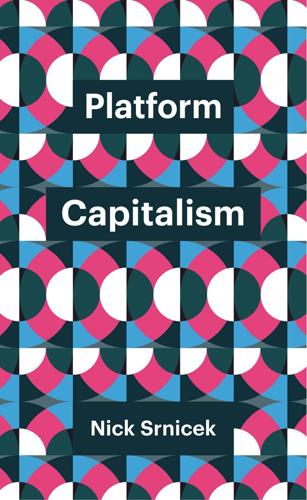
Platform Capitalism
by
Nick Srnicek
Published 22 Dec 2016
With consumer IoT, our everyday behaviours start to be recorded: how we drive, how many steps we take, how active we are, what we say, where we go, and so on. This is simply an expression of an innate tendency within platforms. It is therefore no surprise that one of Facebook’s most recent acquisitions, the Oculus Rift VR system, is able to collect all sorts of data on its users and uses this information as part of the sales pitch to advertisers.14 The fact that the information platform requires an extension of sensors means that it is countering the tendency towards a lean platform. These are not asset-less companies – far from it; they spend billions of dollars to purchase fixed capital and take other companies over.

The Raging 2020s: Companies, Countries, People - and the Fight for Our Future
by
Alec Ross
Published 13 Sep 2021
Google may have seen it as its own line in the sand. But as Lynch saw it, Google gave up an opportunity to directly influence how the Pentagon uses artificial intelligence. Instead, the contract went to Anduril Industries, a defense technology company founded by Palmer Luckey, a controversial libertarian in his twenties who helped invent the Oculus Rift virtual reality headset. Anduril was contracted to build an AI-powered sensor network that would provide troops with a virtual view of the front lines. The sensors would be mounted on drones, fixed towers, and troops themselves, and used to identify potential targets and direct autonomous military vehicles into combat.
…
See also Gulf States; specific countries migration Miliband, David military power, traditional minimum wage Minnesota minority groups MIT (Massachusetts Institute of Technology) Mittelstand Molson Coors Monaghan, Paul Mongolia monopolies Montserrat Mook, Nate Morehouse College Moscow Narodny Bank Mounk, Yascha Mountaire Farms Mugabe, Robert Mussolini, Benito Namibia NASA National Guard National People’s Congress National Science Foundation Native Americans Nazism Nelson, Gaylord Netherlands New Deal New Jersey Newmark, Craig New Zealand Nigeria Nike Nixon, Richard Nordic countries. See also specific countries Nordic model. See also Nordic countries; specific countries Nordstrom Normans North American Free Trade Agreement (NAFTA) North Carolina North Korea Northrop Grumman Norway Novo Nordisk NSA (National Security Agency) Oculus Rift oil companies open vs. closed systems China developing world and Nordic model Organisation for Economic Co-operation and Development (OECD) organized crime organized labor attitudes toward central and northern European model demise of future of gig economy and globalization and golden age of Great Depression and history of Industrial Revolution and inequality and Mediterranean model of union peak of power of revolutionary politics and technology and today World War II and Oxfam International Oxford University Palantir Panama pandemics.
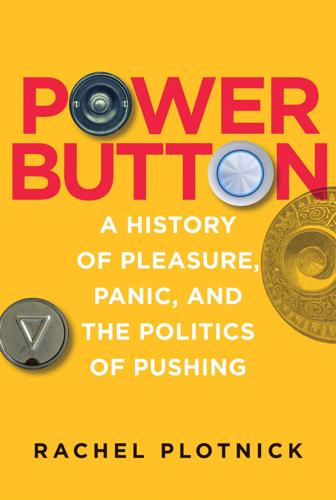
Power Button: A History of Pleasure, Panic, and the Politics of Pushing
by
Rachel Plotnick
Published 24 Sep 2018
Martin Dodge and Rob Kitchin, “Towards Touch-Free Spaces: Sensors, Software and the Automatic Production of Shared Public Toilet,” in Touching Space, Placing Touch, ed. Mark Paterson and M. Dodge (Burlington, VT: Ashgate, 2012). 58. Lev Manovich, The Language of New Media (Cambridge, MA: MIT Press, 2001). 59. Will Greenwald, “Hands on with the Oculus Rift and Oculus Touch Controllers,” PC Magazine, January 7, 2016, https://www.pcmag.com/article2/0,2817,2497577,00.asp. 60. Tim Wu, “The Problem with Easy Technology,” New Yorker, February 21, 2014, http://www.newyorker.com/tech/elements/the-problem-with-easy-technology/. 61. Quoted in Ramin Setoodeh and Elizabeth Wagmeister, “Matt Lauer Accused of Harassment by Multiple Women,” Variety, November 29, 2017, http://variety.com/2017/biz/news/matt-lauer-accused-sexual-harassment-multiple-women-1202625959/. 62.
…
Robinson, President of the Board of Trade, and Treasurer of the Navy, on the Plague and Contagion with Reference to the Quarantine Laws. London: Burgess and Hill, 1819. Gray, Elisha. Nature’s Miracles: Familiar Talks on Science. Vol. 2. New York: Baker & Taylor, 1900. Greeley, E. S. “Electricity Applied to Household Affairs.” Independent: A Weekly Journal of Free Opinion 45 (1893): 7–8. Greenwald, Will. “Hands on with the Oculus Rift and Oculus Touch Controllers.” PC Magazine, January 7, 2016. https://www.pcmag.com/article2/0,2817,2497577,00.asp. Gregory, John Milton. A New Political Economy. Cincinnati, OH: Bragg & Co., 1882. Grint, Keith. “Introduction.” In The Sociology of Work. Cambridge: Polity Press, 2005. Grint, Keith, and Steve Woolgar.

No Filter: The Inside Story of Instagram
by
Sarah Frier
Published 13 Apr 2020
He’d seen Zuckerberg fight with other, more headstrong leaders at Facebook, especially from acquired companies WhatsApp and Oculus, the virtual reality arm, and knew how it could end. For example, after Zuckerberg bought Oculus in 2014, he wanted to change the name of their virtual reality headset, the Oculus Rift, to the Facebook Rift. Brendan Iribe, a cofounder of Oculus and then CEO of that division, argued that it was a bad idea because Facebook had lost trust with game developers. Over a series of uncomfortable meetings, they settled on “Oculus Rift from Facebook.” In December 2016, after a number of similar disagreements, Zuckerberg pushed Iribe out of his CEO position. When someone is having an emotional reaction, you don’t poke at it, Systrom thought.

System Error: Where Big Tech Went Wrong and How We Can Reboot
by
Rob Reich
,
Mehran Sahami
and
Jeremy M. Weinstein
Published 6 Sep 2021
You could plug into this machine and be guaranteed to feel the experience of happiness forever. To create the experience machine, Nozick imagined using “super-duper neurophysicists.” Today, we need not imagine a brain scientist but the actual computer scientists behind virtual reality devices. Instead of the hypothetical example of the experience machine, imagine the Oculus Rift—the powerful VR goggles manufactured by Facebook—on steroids. This is not quite as preposterous or unimaginable as it may sound. Palmer Luckey, a cocreator of Oculus, had in mind a set of gaming experiences in VR, but in interviews he also expressed a far grander aspiration. He spoke of a “moral imperative” to bring VR to the masses so that they, too, and not only the wealthy or geographically privileged, could experience the good things in life such as a sunset over the Aegean Sea, the Mona Lisa in the Louvre, the Great Migration on the Serengeti, or a Bruce Springsteen concert in New Jersey.
…
See data mining Mosaic browser, 30 multi-use technology, 16–17 Myron’s Law, 59 Nadella, Satya, 33–34 National Commission for the Protection of Human Subjects of Biomedical and Behavioral Research, 245–46 Nelson, Alondra, 261 net neutrality, 49, 61–62, 228 Netflix, 5–6 Netherlands Office of Technology Assessment (NOTA), 259 Netscape Communications, 30 Ng, Andrew, 171 Nichols, Tom, 68 Notice and Choice/Consent doctrine overview, 118–19, 120, 133–34, 137–40, 148 EPIC on companies’ privacy policies, 150–51 GDPR compared to, 144 Nozick, Robert, 167, 168 NP-complete problems, 13 nudges, 149 Nuremberg Code, 244–45 O’Neil, Cathy, 98 Obama, Barack, 200, 252 Obama administration’s consumer-privacy bill of rights, 146, 148 Oculus Rift VR goggles, 167 Office of Technology Assessment (OTA), 258–60, 261 Ohm, Paul, 130 OKRs (objectives and key results), 27–28, 31–34 On Liberty (Mill), 198–99 on-device intelligence, 134 Only the Paranoid Survive (Grove), 51 Open Government Partnership, xv Open Letter to the Internet (Berners-Lee), 126 OpenAI, 233–37 OpenSocial specification, 256 optimization mindset, 3–23 overview, xxix, 6 at Amazon, 4–5 corporate growth and, 33–37 deficiency of efficiency, 15–17 education of engineers, 10–15 focus on methods vs. goals, 15 measurable does not equal meaningful, 18–19 multiple valuable goals compete, 19–21 and multi-use technology, 16–17 at Netflix, 5–6 as orientation to life, 13–14 and profit motive leads to libertarianism, 52 and representational adequacy, 13 speculation on optimizing science, 22–23 of technologists, illustrated by Soylent, 9 technologists’ challenges when in government, 261 optimize, usage of term, 14 Ordóñez, Lisa, 34–37 Organisation for Economic Co-operation and Development (OECD), 174 Oversight Board of Facebook, 213–16 Oxford University, 174 Page, Larry, 27–28 Panopti-Cam, 124 panopticon, digital, 113–14, 121–26 “Panopticon” (Bentham), 121–22 parking tickets, social harm or social benefit, xix–xxi Perkins, Frances, 54, 55 personal computing industry, 26 personal ethics, xxix–xxx Plato, 65–66, 67, 75 politicians effect of regulations, or lack of, on digital tech, 53–59, 60–63 lobbying by big tech, 146–47, 253, 261 power of a newswire monopoly, 57 power of economists and political philosophers, 10 power through lobbying, 46, 47–49 stepping up if their jobs depend on it, 262–63 technical ignorance of, 71–72 See also winner-take-all, disruption vs. democracy politics, xxxii–xxxiii, 25, 52, 67, 75–76 Popper, Karl, xxxii–xxxiii, 75–76 Postal Service Act (1792), 3 poverty, escaping from, 170–71 prison panopticon, 123 privacy, 111–51 overview, 114–15 anonymization, 129–30 Apple’s privacy by design, 134–35 beyond GDPR, 145–47 consumer privacy, 125, 126 data mining vs., 84–87, 115–20 differential privacy, 130–33 digital blackout, 127–29 digital panopticon, 121–26 digital trustmediary, 149 effect of COVID-19 pandemic, 139 FTC regulation role, 150–51 GDPR data protection, 142–45 harm from lack of, 120, 124–25 and HIPAA, anonymization, 129–30 marketplace of different providers, 133–36 privacy paradox, 113–15, 137–40 protection as a benefit of society, 140–42 public support for regulations, 148 security vs., 71, 166 Stanford panel discussion on, 119–20 technology and biomedical research, 129–33 See also facial recognition technology private right of action in California, 147 procedural fairness, 92–93 professional ethics, xxx–xxxi, 244 ProPublica investigation of racism in Florida’s criminal court, 97 Public Access to Court Electronic Records (PACER), xxiii public health vs. factory farms, 20–21 Putin, Vladimir, 84 quantitative hedge funds using AI, 163–64 Rabois, Keith, 191–92 racial discrimination in machine-based recruiting system, 80–81 Rahwan, Iyad, 179 random “noise” in data, 131–32 randomized response survey design, 131–32 Rawls, John, 93–94 Reagan, Ronald, 258–59 Really Simple Syndication (RSS) specification, xxii recruiting system with gender bias, 81–82, 83 Reddit, xxii, 44 regret minimization framework, 30 regulations overview, 53 antitrust-based, 55–59, 227–28 based on OTA nonpartisan information, 258 constrain market dominance of big tech companies, 256–57 for creating healthy market competition, 229–30 government’s complicity in absence of, 59–63 matching tech sector innovation with appropriate regulatory structures, 261 medical research and education regulations, 244–51 policy-makers’ dilemma, 56–57 and politicians’ limited tech knowledge, 52–53 on tech start-ups, 45 technical ignorance of lawmakers, 71–72 technology companies lobby for autonomy, 46 when social consequences become intolerable, 55 Reich, Rob, xvi, 22–23 Renaissance Technologies, 163–64 representational adequacy, 13 Republic, The (Plato), 65–66 résumés and algorithmic decision-making, 82–87, 109 revenue optimization process, 43–45 Rhinehart, Rob, 7–9, 20 road safety, 154–55, 239 role of citizens in a democracy, xiv Romer, Paul M., 58–59, 176 Rush, Benjamin, 3 safety, 53–54, 55, 133–34, 154–55, 239 Sahami, Mehran, xv, 27, 38 Samuel, Arthur, 84, 156 San Bernardino, California, terrorist attack, 72, 134–35 Sanger, Larry, 195 Schatz, Brian, 240 Scholes, Myron, 59 search engine optimization (SEO), 196 Section 230, Communications Decency Act (CDA 230), 62, 221–23, 225 security, 20, 56, 71–72, 111–14, 116–17, 121–25, 128–29, 134–35, 141, 156, 166, 258 self-driving vehicles DARPA Grand Challenge, 153–54 effect on truck drivers and trucking industry, 175 human nature vs., 155–56 human pleasure from driving, 172 safety of, 154–55 in Silicon Valley, 186 society’s response to, 175 Sen, Amartya, 74, 172–73 separations regime, 229 September 11, 2001, terrorist attacks, 116 Sherman, John, 228 Sherman, Rob, 119–20 Shklar, Judith, 76 Siebel, Michael, 40 Sifton, Sam, 9 Silicon Valley, xiv, xxv–xxvi, 28, 40–41, 73 Silverberg, Nicole, 188 Simplex algorithm, 12 smart machines and humans, 153–86 overview, 160–65 autonomous weapons, 177–78 benefits for people whose jobs are changed or lost, 182–86 choice of human flourishing or greater productivity, 169 deep learning concept, 161–62 ethics and AI, 165–66 jobs lost and other costs of adjustment, 174–76 keeping humans in the loop, 178–82 livelihood destroying potential, 170–71 overcoming poverty to promote human flourishing, 170–71 value of freedom, 172–73 virtual reality, the experience machine, 167–69 Snowden, Edward, 116, 126, 139, 143–45 social and political ethics, xxxi–xxxiii Social Dilemma, The (documentary), 238–39 “Social Responsibility of Business Is to Increase Its Profits, The” (Friedman), 37–38 social safety nets, Europe and US compared, 185–86 social science, xv–xvii, xxvi, 137–40 Software Engineering Code of Ethics, 248 Solove, Daniel, 140 Soylent, 6–9, 20 Soylent Green (film), 7–8 Spliddit’s “provably fair solutions,” 88–89 Stanford University, Stanford, California overview, xiv, xv, xvi hate speech or hateful protected speech, 191–92 panel discussion on privacy concerns, 119–20 study of libertarian attitudes of tech leaders, 52 teaching computer science with social science and ethics, 251 VCs showcasing their new companies, 42–45 start-up accelerators, 44.

Future Crimes: Everything Is Connected, Everyone Is Vulnerable and What We Can Do About It
by
Marc Goodman
Published 24 Feb 2015
Even the sense of touch can be re-created as haptic or tactile feedback technologies apply “force, vibration or motions” to the user. As Mark Zuckerberg commented upon Facebook’s $2 billion acquisition of Oculus Rift, a highly responsive virtual reality head-mounted display, in early 2014, “Strategically we want to start building the next major computing platform that will come after mobile.” Tools like the Oculus Rift headset can transport us in an instant to immersively experience a beautiful Tuscan villa, a courtside seat at an NBA game, or an imagined but realistic battle with Klingons and Romulans. One of the earliest virtual worlds was Second Life, which was launched by Philip Rosedale of Linden Lab in 2003 and allowed users to represent themselves in the form of highly customized avatars.
…
The McKinsey Global Institute predicts that the innovation enabled across multiple sectors by the Internet of Things is expected to drive as much as an additional $6.2 trillion in value to the global economy by 2025. The IoT may very well be where the next Google, Facebook, or Apple is found, and the number of sensors, consumer devices, and industrial control systems online has already surpassed the number of mobile phones. Early entrants to the IoT such as Fitbit, Jawbone, Oculus Rift, Withings, Estimote, and Sonos have generated significant buzz and market valuation. Indeed, one such firm, the smartthermostat company Nest Labs, was acquired in 2014 for an astounding $3.2 billion just 854 days after the launch of its first product. And while there is undoubtedly big money to be made in the IoT, its social implications may even outstrip its economic impact.

Radical Technologies: The Design of Everyday Life
by
Adam Greenfield
Published 29 May 2017
This is conscious, if not in the AR community itself then at least on the part of some of the most prominent developers of commercial virtual-reality gear.20 One of the primary functions these enthusiasts imagine for VR is to camouflage the inequities and insults of an unjust world, by offering the multitude high-fidelity simulations of the things their betters get to experience for real. This is Oculus Rift developer John Carmack: “Some fraction of the desirable experiences of the wealthy can be synthesized and replicated for a much broader range of people.” Here we see articulated—in so many words, and by someone at the center of VR development for many years—the idea that all of the vertiginous inequity we live with is so entrenched and so unchallengeable that all we can do is accede to it, and that the best thing we can do with our technology is use it as a palliative and a pacifier.
…
P., 269 Machii, Isao, 266–7 machine learning, 8, 16, 60, 185, 192, 194, 209–57, 308 maker spaces, 93 MakerBot, 85, 88, 101, 104–5, 107 mapping, 22–5, 275, 278 Mann, Steve, 77–8 Marx, Karl, 70, 305 MasterCard, 120 Mason, Paul, 88 Mauthausen, 61 McDonald’s restaurant chain, 194–5 McDonough, William, 96 McNamara, Robert, 57 Merkle roots, 123 Metropolitan Police Service, London, 231 Microsoft, 38–9, 262, 275 minimal techno (music genre), 221 Minority Report (movie), 227, 230 MIT Technology Review (journal), 243 Mitte, Berlin neighborhood, 71–2 Monobloc chair, 106 Monroe, Rodney, 230 Moore’s Law, 88, 93 Morris, David, 256–7 Mountain View, California, 284 M–Pesa digital currency, 117 Music Genome Project, 220 Musk, Elon, 222 National Institute of Justice, 233 National Public Radio, 41, 192 National September 11th Memorial, 65 National Technical University of Athens, 173 NAVSTAR Global Positioning System, 21 NBC Universal, 220 neural networks, 214–16, 219, 264, 266 Nevada, 192 New York City, 51, 56–8, 136, 238 New York Times (newspaper), 177 Next Rembrandt project, 262–3, 265 near-field communication standard (NFC), 17, 117 Niantic Labs, 65 Niemeyer, Oscar, 261 Nieuwenhuys, Constant, 190 Niigata, Japan, 301–2 niqab, 295 Nixon Administration, 204 nonvolatile memory, 15 North Dakota, 192 Norwegian black metal (music genre), 221 Nuit Debout protests, 3 Occupy movement, 167, 169 Oculus Rift virtual reality headset, 82 O’Neil, Cathy, 249 open source hardware, 102 OpenTable, 39–40, 46 Osborne, Michael A., 195 Ostrom, Elinor, 171 output neuron, 215 overtransparency, 240–1, 243 Pai, Sidhant, 98 Pandora music service, 220 Panmunjom Truce Village, 65 Pareto optimality, 55, 59 Paris, 1–6, 292 Pasquale, Frank, 244, 253 path dependence, 232, 299 PayPal, 120, 136, 220 PCWorld, 45 People Analytics, 198, 226, 232 perceptron, 214 Père Lachaise cemetery, 2, 5, 26 persoonskaart, Dutch identity card, 60 Pew Research Center, 41, 193 Pinellas County, Florida, 256 Placemeter, 51 polylactic acid plastic filament (PLA), 94, 98, 101 Pokémon Go, 63–5, 76, 79 Polari, 311 policy network, 264 Pollock, Jackson, 261 Pony Express, 256 porosity, 28, 173 POSIWID, 155, 302 Postcapitalism (Paul Mason), 88 power/knowledge, 62 predictive policing, 227, 230, 232, 235 PredPol, 229, 231, 236, 244, 254 proof-of-work, 128–30, 140–1, 143, 290 prosopagnosia.

Your Face Belongs to Us: A Secretive Startup's Quest to End Privacy as We Know It
by
Kashmir Hill
Published 19 Sep 2023
He estimated that hosting them using Amazon’s cloud services would require paying $10,000 or more per month, so, perpetually thrifty, he looked into other options. He wound up rigging his own storage solution, based on an open-source system called Ceph, but that was only a temporary fix. Smartcheckr was going to need more money to keep this operation going. Ton-That emailed two of the richest people that Johnson had introduced him to: Oculus Rift founder Palmer Luckey and billionaire investor Peter Thiel. “I got a prototype working,” he told Luckey, who was intrigued enough to ask for more information about it. That was flattering, but flattery wouldn’t pay the bills. Ton-That had more luck with Thiel, whom he had met in Cleveland the year before.
…
See also Facebook metadata, location, 206 metaverse, 146 #MeToo movement, 151 Metropolitan Police (London), 214–219 Miami Police Department, 230–236 Michigan State Police, 180 Microsoft digital billboards and, ix neural networks technology and, 74 PhotoDNA and, 135 push for ethical use and, 239 racial bias and, 156 Smartcheckr and, 76 Xbox and, 142 Minority Report, vii, 123, 125 Minsky, Marvin, 37, 43–44, 73 Miranda rights, 175 MIT Media Lab Buolamwini and, 156 “Ricky Vaughn” Twitter account and, 94 Turk and, 43–44, 46, 48, 60 Mithal, Maneesha, 121, 126, 143 mobile apps, 6 mobile facial recognition units, 214–219 Monroe, Marilyn, 41 More, Trenchard, 267n36 Moses, Robert, 27 Mossberg, Walt, 102–103 Mozur, Paul, 224–225, 226, 227 MuckRock, 157 mug shots ACLU and, 203 Clearview AI and, 240 Congressional hearings and, 143 “criminal face” and, 31 early facial recognition efforts and, vii–viii FBI and, 70, 71 Florida’s use of, 63 Michigan’s database including, 177–178 NYPD and, 130, 131 Rekognition and, 138 scraping and, 33 standardization of, 22 Myspace, 123 N NAACP, 39 Nadler, Jerry, 89, 91–92 Narrative of an Explorer in Tropical South Africa (Galton), 18 National Crime Agency, 136 National Institute of Standards and Technology (NIST) bias problems and, 178, 179–180, 240 Clearview AI and, 162 Facial Recognition Vendor Test by, 68, 99, 178 FERET and, 67–68, 103 founding of, 67 testing by, 67–70 National Press Club, 53, 55 National Security Agency (NSA), 149 NATO summit, 154 Nazi regime, 20, 25–26 NBC News, 94 NEC (Nippon Electric Company), 40–41, 180, 216, 240 Nehlen, Paul, 93 Nest, 151 Netflix, 73 neural networks technology DeepFace and, 147 development of, 73–75 Minsky and, 37, 73 poor training and, 178 power of, 203 Schneiderman and, 103–104 Smartcheckr and, 76 SuperVision and, 147 Neven, Hartmut, 99, 101–102 Neven Vision, 99–100 New York City Police Department (NYPD), 138 New York Times Magazine, 209, 248 New York Times, The Abrams and, 206–207 on Clearview AI, 164–165, 187, 190, 204, 230 on Facebook, 107 Super Bowl (2001) and, 62 on supercomputers, 75 Newham Borough, 66 Nielsen, 44, 271n46 9/11, 28, 64, 235 Nippon Electric Company (NEC), 40–41, 180, 216, 240 NIST (National Institute of Standards and Technology) bias problems and, 178, 179–180, 240 Clearview AI and, 162 Facial Recognition Vendor Test by, 68, 99, 178 FERET and, 67–68, 103 founding of, 67 testing by, 67–70 Nixon, Richard, 206–207 Northrop Grumman, 242 NSA (National Security Agency), 149 NtechLab, 220–221, 222, 240 Nvidia, 147 NYPD (New York City Police Department), 128–133, 138 O Obama, Barack, 11, 122, 209 Ocasio-Cortez, Alexandria, 283n89 Occupy Chicago movement, 153–155 Occupy Wall Street movement, 153 Oculus Rift, 79 Oculus Virtual Reality, 57 Office of Personnel Management, 84 O’Harrow, Robert, 277n66 OkCupid, xvii, 33 Oliver, Michael, 183 Olympics, 62 On the Origin of Species (Darwin), 19 online ghosts, xiv OnlyFans, 201 Ontario regional police services, 136 Oosto, 219 Open Society Foundations, 57 Open the Government, 155 OpenFace, 74 Operation Open Door, 165 Oppenheimer, J.
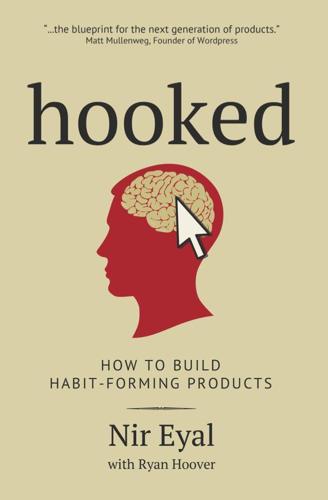
Hooked: How to Build Habit-Forming Products
by
Nir Eyal
Published 26 Dec 2013
Likewise, the fast ascent of mobile devices, including tablets, has spawned a new revolution in interface changes—and a new generation of start-up products and services designed around mobile user needs and behaviors. To uncover where interfaces are changing, Paul Buchheit, a partner at Y Combinator, encourages entrepreneurs to “live in the future.”10 A profusion of interface changes are just a few years away. Wearable technologies like Google Glass, the Oculus Rift virtual reality goggles, and the Pebble smartwatch promise to change how users interact with the real and digital worlds. By looking forward to anticipate where interfaces will change, the enterprising designer can uncover new ways to form user habits. REMEMBER & SHARE The Hook Model helps the product designer generate an initial prototype for a habit-forming technology.
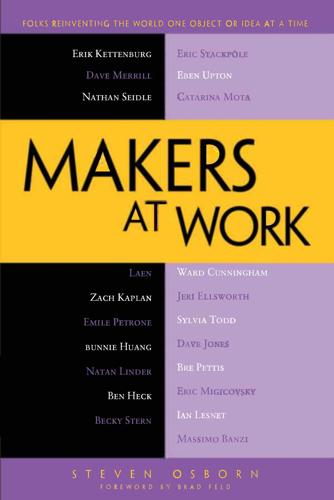
Makers at Work: Folks Reinventing the World One Object or Idea at a Time
by
Steven Osborn
Published 17 Sep 2013
Osborn: You’ve done a lot of pretty wild things, things people wouldn’t ever consider, and that’s great. But I wonder if there are any projects that other people are working on that you think are interesting, or things you’ve seen other people build that are cool? Heck: Gosh, there’s tons of things. That Oculus Rift guy, Palmer Lucky, he used to be on my forums actually, so it’s pretty cool to see him succeed. I’d love to try that thing. Have you tried it? Is the field of vision really awesome? Osborn: I haven’t, but I saw a video about it this week, and I was like, “Man, I have to touch one.” Heck: How much is it going to be?
…
See Linder, Natan Forward-reaching approach Free Art and Technology (FAT) Free Software Foundation Full Spectrum 40-watt hobby laser G Gadget factory GPS dog collar Graffiti Research Lab H Hall City Cave Heck, Ben Apple stock Atari video game console atomic bomb, destructive technology Brittany Spears effect bullshit buying and modding buying, equipment design and manufacture pinball machines design circuit board systems 3D printing and technology expensive to make controller Geocities web site graphics artist MakerBot/3D scanner making independent films N64 Oculus Rift guy Palmer Lucky physical capability and dexterity Power Glove prototypes video editing experience video producer (Herreid, Alyson) Xbox 360 laptop Huang, bunnie ARM CPUs, 64-bit artificial barriers billion-dollar company chumby electronic stickers FedEx charges foster hardware engineering hardware ecosystem hardware hacker innovation ecosystem Kickstarter projects legal defense fund media lab Microsoft Xbox Mims, Forrest (books) open-source laptop own projects reconfigurable hardware image-processing solution Safecast Sifteo cubes small entrepreneur smartphones speech synthesizer US vs.
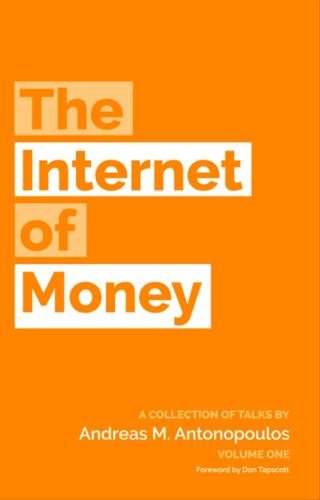
The Internet of Money
by
Andreas M. Antonopoulos
Published 28 Aug 2016
Because, clearly, if we had Netflix in 1992, a single video stream to a single user would melt down the entire internet. Yet, here we are today. By the way, the internet is failing to scale for Netflix and all of the other companies that are doing live video. It will continue to fail to scale incrementally and gracefully. Soon, we’ll be doing Oculus Rift holographic 3D, 4K, VR. Then, it will really fail to scale. People will still write Ph.D. theses on why the internet is about to melt down. 11.2. Scaling is a Moving Target Scaling is a moving target. Scale defines the edge of today’s capabilities. As it moves forward, capability increases.
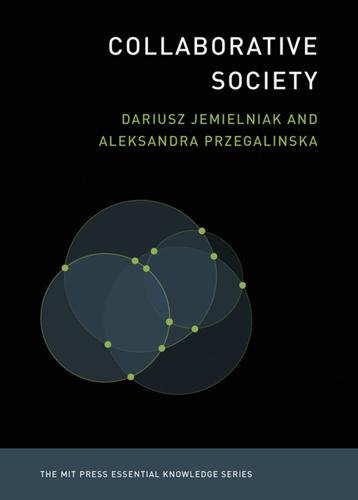
Collaborative Society
by
Dariusz Jemielniak
and
Aleksandra Przegalinska
Published 18 Feb 2020
Przegalinska, Istoty wirtualne (Universitas, 2016). 25. Bruns, Blogs, Wikipedia, Second Life, and Beyond. 26. https://perma.cc/L7SH-EB3V 27. T. Kelsey, Social Networking Spaces: From Facebook to Twitter and Everything in Between (Apress, 2010). 28. R. Marfone, The Real Reason Facebook Acquired Oculus Rift: How Virtual Reality Will Disrupt Every Industry and Why You Should Care (CreateSpace Independent Publishing Platform, 2016). 29. P. A. Smith, “Using Commercial Virtual Reality Games to Prototype Serious Games and Applications,” in Virtual, Augmented and Mixed Reality, ed. S. Lackey and J. Chen, 10280, (Springer International Publishing, 2017), 359–368. 30.
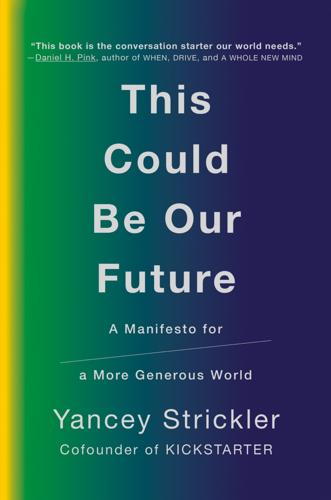
This Could Be Our Future: A Manifesto for a More Generous World
by
Yancey Strickler
Published 29 Oct 2019
Kickstarter and others established a new possibility for funding creative projects and ideas that’s now accepted and mainstream. Many Kickstarter projects underwent a similar transition from new and unproven idea to mainstream acceptance. The tabletop game Cards Against Humanity started as a Kickstarter project backed by several hundred people. So did Oculus Rift, which was a prototype in a garage when its Kickstarter launched. Pebble invented smartwatches with its string of Kickstarter projects. Hundreds of restaurants, movie theaters, galleries, and other public spaces are open today thanks to their backers and the platform. All these projects began as ideas just like Kickstarter itself.

Survival of the Richest: Escape Fantasies of the Tech Billionaires
by
Douglas Rushkoff
Published 7 Sep 2022
“The real world will seem flat, colorless, blurry compared to the experiences you’ll be able to create in people’s brains.” This will be especially valuable as the real world continues to degrade. VR developers even make an economic justice case for throwing us all into a simulation. “It is not possible , on Earth, to give everyone all that they would want,” Oculus Rift Chief Technol ogy Officer John Carmack explained on the Joe Rogan podcast. “Not everyone can have Richard Branson’s private island.” VR is the new solution to climate change—or maybe the ultimate surrender to its inevitability. As resources vanish and economic conditions worsen, technological simulations can fill in where real wealth has disappeared.
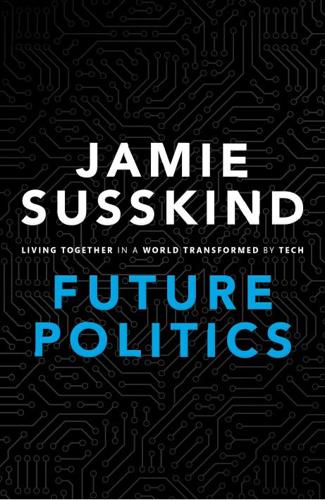
Future Politics: Living Together in a World Transformed by Tech
by
Jamie Susskind
Published 3 Sep 2018
Touch controllers bring your hands in with you as well.132 ‘Haptic’ clothing gives you sensual feedback through tiny vibrating motors spread over your body— you really don’t want to get stabbed or shot.133 Once inside, you’re free to see, feel, explore, and interact with a new dimension of existence. While AR technologies operate within the real world, VR technologies create an entirely new one. Technology giants including Facebook (Oculus Rift), Microsoft (HoloLens), Samsung (Gear VR), Google (Daydream), and Playstation (Playstation VR) are already in fierce competition to develop the best VR hardware. Virtual reality feels remarkably real. After a few moments of adjustment, even resistance, users’ senses begin to adapt to the new universe around them.
…
S. 57 Elster, Jon 304, 425 EMC 386, 387 Emerging Technology from the arXiv 422 emotions affective computing 52–3 perception-control 148–9 Enchassi, Nadia Judith 370, 420 encryption 182–4 Engels, Friedrich 310, 326–7, 362, 426, 429, 436 England Levellers 215–16 Luddites 13 Revolution 77, 167–8 Entous, Adam 433 entrenchment, rule-based injustice 284 Epicenter 51 epidermal electronics 44 Epstein, Robert 398 equality 10 Data Democracy 247 Deliberative Democracy 234 democracy 223, 225–6 Direct Democracy 240 distributive justice 262–3 human nature 364–5 and justice, difference between 259 of opportunity 260, 261, 263, 270, 294 Esteva, Andre 372 Estonia 47, 220 Ethereum 47 ethics Data Deal 339 human enhancement 363 see also morality European Convention on Human Rights 326 European Court of Human Rights 31, 109 European Court of Justice 138 European Parliament 184 European Union (EU) Brexit 4, 233, 239 competition law 357 General Data Protection Regulation 138, 433 Google fine 357 personal data laws 138 right to explanation 354 taxation 328 everyware see smart devices Executive Office of the President 421, 422 exploitation 273 Eyefluence 319 Facebook acceptable/unacceptable posts 190 acquisitions 318, 319–20 artificial intelligence 116 ban on far-right groups 236 commercial value 66 concentration of tech industry 318, 319, 320, 321 democracy 359 embarrassing photographs 137 fake news 230 fragmented reality 230 friends 284 job applicants 267 Kurds 236 ‘Likes’ 132, 149, 221, 248 machine learning 35 Messenger 318 new media 77 news platform 147 Newsroom 406 Oculus Rift 59 personal data about users 64–5 photograph upload numbers 63 power 350 rules 116 OUP CORRECTED PROOF – FINAL, 28/05/18, SPi РЕЛИЗ ПОДГОТОВИЛА ГРУППА "What's News" VK.COM/WSNWS Index user emotions 148–9 user-generated content 315 user numbers 45, 65 users as unpaid workforce 338 US presidential election (2016) 354 Faception 173 facial analysis 52 facial recognition 30, 51 data-based injustice 282 machine learning 36 rule-based injustice 285–6 totalitarianism 178 fact-checking 234 Fairfield, Joshua A.

The Best Interface Is No Interface: The Simple Path to Brilliant Technology (Voices That Matter)
by
Golden Krishna
Published 10 Feb 2015
Those figures have and will fluctuate, but the current ad-based businesses—sometimes masked in PR with buzz terms like data businesses, or aligned with the old guard as media companies—dictate that the lion’s share of their revenue will remain focused on the ads that pollute their otherwise valued content. Hopefully buyouts or valuable new product creation—such as Google’s acquisition of the hardware company Nest, or Facebook’s purchase of the virtual reality device Oculus Rift—will alter course by having other profitability far surpass ad revenue, but for now this is our reality: Google at launch Google now “Got the girl. Got the money. Now I’m ready to live a disgusting, frivolous life.” 5 Those are words of Stephan Paternot on CNN. On Friday the 13th, in November 1998, he watched the stock price of theGlobe.com—the web-site he cofounded in 1995 while a student at Cornell—increase by 606 percent in a Bear Stearns IPO that was Wall Street’s largest first-day gain.

Whiplash: How to Survive Our Faster Future
by
Joi Ito
and
Jeff Howe
Published 6 Dec 2016
The Internet is simply a way to disassemble information and reassemble it somewhere else. What technology actually does, the real impact it will eventually have on society, is often that which we least expect. By the time you read this sentence, Oculus VR will have released a consumer version of its Oculus Rift, a virtual reality headset. How will we put it to use? Developers are already at work on video games that will take advantage of the intense immersion the Rift provides. Porn, that $100 billion industry, will not be far behind. It could allow doctors to perform remote surgical operations, or simply provide checkups for patients unable to get to a doctor’s office.

The System: Who Owns the Internet, and How It Owns Us
by
James Ball
Published 19 Aug 2020
We’re in New York’s fashionable Meatpacking District, surrounded by designer shops, restaurants and bars, and just yards from the Hudson River. As you walk into the building you’re greeted with a wall of some of the biggest successes of the crowdfunding site Kickstarter, in which betaworks invested. There is a prototype Oculus Rift VR headset ($2.4 million raised), Hickies no-tie shoelaces ($580,000 raised), the Light Phone, an ultra-minimalist mobile phone ($415,000), and Sammy Screamer, a mobile alarm to ‘keep an eye on your stuff’ ($90,840), all on show as I visit. In the reception to the huge open-plan space, replete with the expected kitchens, chill-out areas, ultra-modern seating and more, you can catch snippets of conversation which also sound exactly like a tech investment company should.
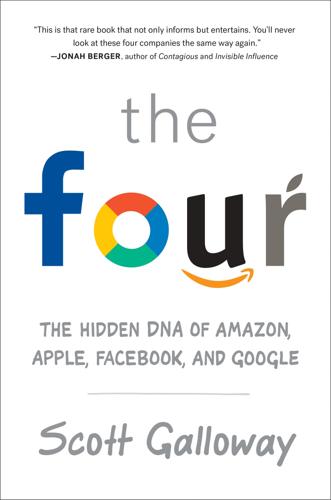
The Four: How Amazon, Apple, Facebook, and Google Divided and Conquered the World
by
Scott Galloway
Published 2 Oct 2017
In 2016, the two firms accounted for 103 percent of all digital media revenue growth.27 This means that, sans Facebook and Google, digital media now joins newspapers, radio, and broadcast TV as sectors that are in decline. Head Fake As they fight for market dominance, both Facebook and Google can be expected to make bold bets on the future. One especially expensive route leads to virtual reality, and that’s where Facebook stole the march on the industry. In 2014, Zuck paid $2 billion for Oculus Rift, the leading VR headset company.28 Following that acquisition, he raved, “VR will open up new worlds.” Spoiler alert: it hasn’t. People were envisioned strapping on headsets to attend virtual work meetings. Surgeons in New York and Tokyo could operate in the same virtual theater. Grandparents would spend virtual time with their far-flung grandkids.
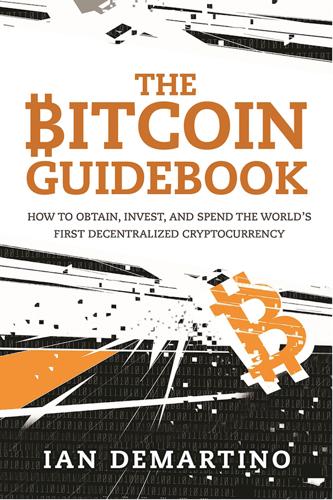
The Bitcoin Guidebook: How to Obtain, Invest, and Spend the World's First Decentralized Cryptocurrency
by
Ian Demartino
Published 2 Feb 2016
There is also equity-based crowdfunding, which is like normal crowdfunding except the funders receive shares of the company rather than a product or one of the rewards typical in crowdfunding campaigns. Although not feasible in the US due to stringent regulations, companies elsewhere have been crowdfunding projects and companies by selling off parts of the company to the crowdfunders. Essentially, it is crowdfunded investment capital. The funders of the Oculus Rift would have stood to gain a pretty penny had that company offered equity, rather than development kits that were quickly made obsolete, to their backers. (Oculus later announced early backers will receive a consumer-version virtual reality headset when it launches.) Uphold, which has been mentioned a few times already, ran an equity crowdfunding campaign and raised more than $9 million without being open to US customers.1 But those are the fiat world’s solutions.
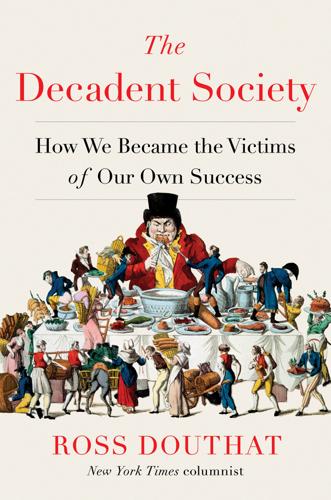
The Decadent Society: How We Became the Victims of Our Own Success
by
Ross Douthat
Published 25 Feb 2020
And the drugs pair with the virtual entertainments in the same way that soma pairs naturally with other features of the Brave New World World State. Huxley’s perfectly stabilized society had the “feelies”—essentially VR sex. We are not so far away from something similar, at the place where sex robots and Oculus Rift converge. Our society doesn’t repress youthful lust and aggression so much as it stimulates them safely through video games and smut; his dystopia had the mandatory Violent Passion Surrogate, administered “regularly once a month. We flood the whole system with adrenin. It’s the complete physiological equivalent of fear and rage.
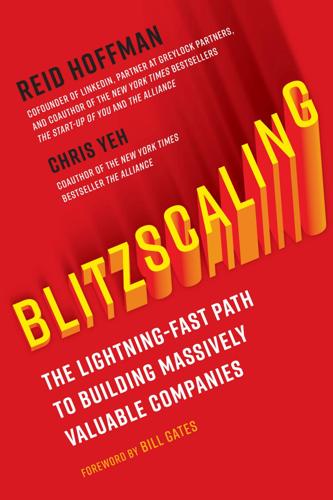
Blitzscaling: The Lightning-Fast Path to Building Massively Valuable Companies
by
Reid Hoffman
and
Chris Yeh
Published 14 Apr 2018
Large companies can (if they have patient shareholders) have longer time horizons than start-ups, which need to show immediate results to continue raising money. Google often plays this long game with technologies ranging from self-driving cars to a cure for aging. Facebook is also playing the long game with Oculus Rift and VR. The key is knowing when to scale up. Microsoft tried to scale smartphones too early with Windows CE; as it turns out, the modern smartphone only became practical once Moore’s Law made mobile CPUs powerful enough, and Apple combined software with capacitive touch screens, Corning’s damage-resistant Gorilla Glass, and high-volume Chinese manufacturing.
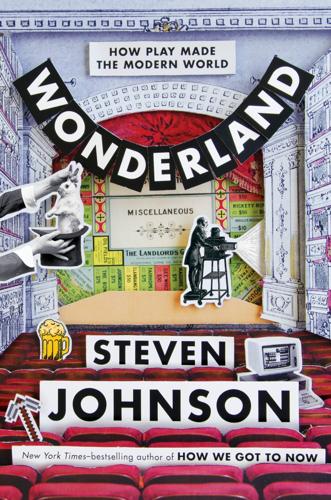
Wonderland: How Play Made the Modern World
by
Steven Johnson
Published 15 Nov 2016
Unlike his earlier kaleidoscope invention, Brewster managed to build a successful business selling his contraption, properly branded as a “Brewster Stereoscope.” Queen Victoria famously marveled at one during the Great Exhibition of 1851. The stereoscope lives on to this day in the form of the popular View-Master toy, and the fundamental illusion the stereoscope relies on is also central to virtual reality goggles like Oculus Rift. Optical illusions can be employed for more serious pursuits. Until the late nineteenth century, the most famous and influential “trick of the eye” was the invention of linear perspective, generally credited to the architect Filippo Brunelleschi, though the fundamental rules that governed the technique were first outlined in the book On Painting by Leon Battista Alberti.

Driverless: Intelligent Cars and the Road Ahead
by
Hod Lipson
and
Melba Kurman
Published 22 Sep 2016
Over the past few decades, the consumption of pornography has been an accelerating force in the development of technologies like the VHS video player, streaming video, and the internet. Driverless cars could offer a comfortable new viewing environment for fans of pornography to immerse themselves in, particularly as virtual-reality goggles like the Oculus Rift make the experience even more intense. The road ahead What lies ahead? Robotics technologies are reaching a critical tipping point and driverless cars are finally showing real promise in becoming a safe and viable mode of transportation. I sometimes find myself wondering what it will be like to someday explain to younger generations how the act of driving used to be equated with adulthood and freedom.

Life After Google: The Fall of Big Data and the Rise of the Blockchain Economy
by
George Gilder
Published 16 Jul 2018
At this conference, where Strivr is showing off its ingenious immersive training technology, Hillenmeyer is a bigger star than Manning. He points out that Moore’s Law has brought the price of virtual reality gear down to one-tenth or less of what it was in the heydays of Doug Trumbull and Jaron Lanier. Today, Facebook’s Oculus Rift headsets cost less than a thousand dollars—still prohibitively expensive for the consumer market but cheap compared with previous VR systems. “Learning by doing” is by far the most effective form of training, and Strivr has focused on the details of delivering a full experience of virtual learning.

The Seventh Sense: Power, Fortune, and Survival in the Age of Networks
by
Joshua Cooper Ramo
Published 16 May 2016
Unfortunately, there’s not some switch we’ll hit and move from today to the Jetsons. Our future will look less like an isolated technological paradise than an intermingling of real and virtual. It will not be an age in which we disappear into a blacked-out virtual reality—marked by a life lived on the digital side of an Oculus Rift, say, or inside the subversive and dystopian world of novels such as Ready Player One. Rather, real and virtual worlds will combine. We will be augmented by our connections, as reality is augmented by the HoloLens or Magic Leap goggles. Think of Snow Crash, Neal Stephenson’s masterpiece novel, for instance, in which characters move effortlessly between net and city.
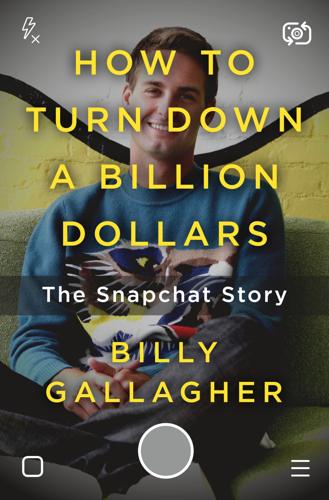
How to Turn Down a Billion Dollars: The Snapchat Story
by
Billy Gallagher
Published 13 Feb 2018
Then the entrant gets better (adding more features like video sharing and geofilters) and moves upmarket (adding Snapchat Stories and moving into the social network space), attracting a bigger share of the market (passing Twitter in daily active users) and better customers (older, more affluent users, and celebrities and media companies signing on as publishers). Mark Zuckerberg is hyper aware of this potentially lethal threat from startups; he builds separate teams at Facebook to create new apps and snatches up the best new companies by making aggressive offers for hot startups like Instagram, WhatsApp, and Oculus Rift. But Evan wouldn’t sell, so Snapchat became the one that got away. And Snapchat keeps moving up and up, attracting more users and stealing more photos and videos that users formerly posted to Facebook or Instagram. It’s tempting to think that whoever has the better team and better technology will win.
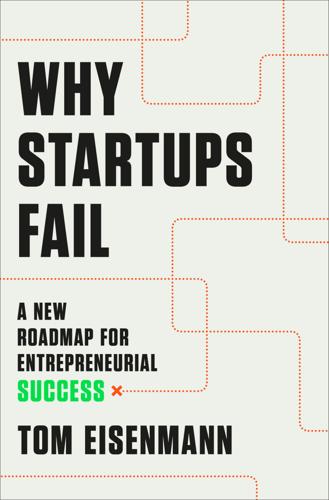
Why Startups Fail: A New Roadmap for Entrepreneurial Success
by
Tom Eisenmann
Published 29 Mar 2021
The idea was, if Jibo sat in the kitchen, he might spark conversation between, say, squabbling siblings, or surly teenagers and their harried parents. VCs with children could relate to this target consumer, and they were intrigued by cutting-edge consumer hardware in the wake of Facebook’s $2.3 billion acquisition of the virtual reality headset maker Oculus Rift—which, like Jibo, was a breakthrough fusion of hardware and software, targeted to consumer markets. And, having witnessed the explosive growth of platforms like Facebook, Amazon, and Salesforce.com, VCs liked that Jibo would be a platform, hosting applications from a wide array of third-party software developers and information services.

You've Been Played: How Corporations, Governments, and Schools Use Games to Control Us All
by
Adrian Hon
Published 14 Sep 2022
Nick Paumgarten, “Master of Play,” New Yorker, December 12, 2010, www.newyorker.com/magazine/2010/12/20/master-of-play; Robbie Collin, “Nintendo’s Shigeru Miyamoto: ‘What Can Games Learn from Film? Nothing,’” Telegraph, November 10, 2014, www.telegraph.co.uk/culture/film/film-news/11201171/nintendo-super-mario-pikmin-tokyo-film-festival-mandarin-oriental-tokyo-sega-mario-kart-zelda-wii-oculus-rift.html. 61. Chris Kohler, “Q&A: Nintendo’s Shigeru Miyamoto Talks Wii Fit,” Wired, May 19, 2008, www.wired.com/2008/05/miyamoto-wii-fi. 62. Nintendo, “Top Selling Title Sales Units: Wii Software.” 63. “Yearly Archives: 2007, page 3,” Quantified Self, accessed November 26, 2021, https://web.archive.org/web/20170629220503/http://quantifiedself.com/2007/page/3. 64.
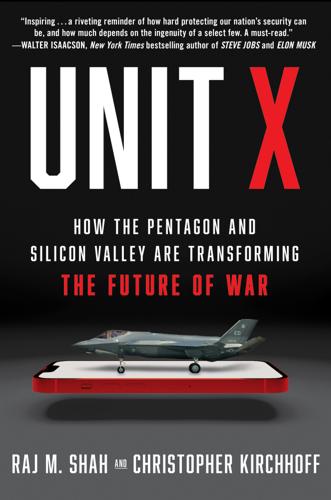
Unit X: How the Pentagon and Silicon Valley Are Transforming the Future of War
by
Raj M. Shah
and
Christopher Kirchhoff
Published 8 Jul 2024
And no service secretary likes to be embarrassed in public,” air force general John Hyton, who became Vice Chairman of the Joint Chiefs of Staff when Paul Selva retired, would later remark. A third Founders Fund company, Anduril, also started shaking up the way the Pentagon acquired products. Its founder, Palmer Luckey, was only twenty-one years old when he sold his first company, Oculus Rift, a maker of virtual reality goggles, to Facebook for $2 billion in 2014. A few months later, Luckey attended a retreat in British Columbia hosted by Founders Fund, which had been one of the investors in Oculus. At the retreat he met Trae Stephens, a former intelligence analyst and Palantir executive who’d joined Founders Fund with the goal of investing in venture-backed companies aimed at the defense sector.
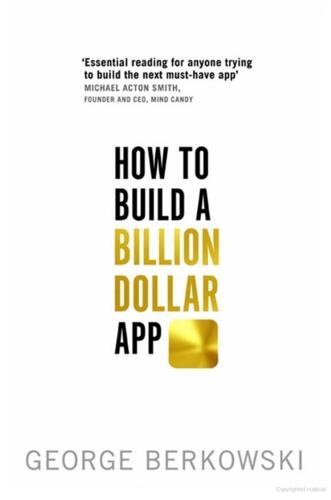
How to Build a Billion Dollar App: Discover the Secrets of the Most Successful Entrepreneurs of Our Time
by
George Berkowski
Published 3 Sep 2014
While Google Glass has received a lot of attention because of Google’s profile, another equally fascinating, and potentially even more disruptive, technology company has captured headline. It is called Oculus VR and it might just be the first company to bring virtual reality to the masses. The company’s founder Palmer Luckey is a self-proclaimed virtual reality enthusiast and hardware geek. He launched a campaign on crowd-funding website kickstarter back in 2012 to build the Oculus Rift – a groundbreaking virtual reality headset for immersive gaming. The campaign was beyond successful and raised not only $2.4 million in funding, but also won the support of three huge gaming companies: Valve, Epic Games and Unity. That success attracted some of the gaming world’s best talent, almost $100 million in venture capital funding and the acquisition of the company by Facebook in March 2014 for $2 billion.

Invisible Women
by
Caroline Criado Perez
Published 12 Mar 2019
D. (2005), ‘Gender differences for non-fatal unintentional fall related injuries among older adults’, Injury Prevention, 11, 115–19 26 Ibid. 27 https://www.ncbi.nlm.nih.gov/pmc/articles/PMC4750302/ 28 Chang, Vicky C. and Minh, T. (2015), ‘Risk Factors for Falls Among Seniors: Implications of Gender’, American Journal of Epidemiology, 181:7, 521–31 29 Yin, Hujun et al eds. (2016) Intelligent Data Engineering and Automated Learning, Proceedings of the 17th International Conference, Yangzhou China 30 https://www.theatlantic.com/technology/archive/2014/12/how-self-tracking-apps-exclude-women/383673/ 31 https://www.afdb.org/en/blogs/investing-in-gender-equality-for-africa%E2%80%99s-transformation/post/technology-women-and-africa-access-use-creation-and-leadership-13999/] 32 https://www.bloomberg.com/news/articles/2016–06-23/artificial-intelligence-has-a-sea-of-dudes-problem 33 http://interactions.acm.org/archive/view/january-february-2014/areyou-sure-your-software-is-gender-neutral 34 http://foreignpolicy.com/2017/01/16/women-vs-the-machine/ 35 https://www.bloomberg.com/news/articles/2016–06-23/artificial-intelligence-has-a-sea-of-dudes-problem 36 https://www.ncwit.org/sites/default/files/resources/btn_03232017_web.pdf 37 https://www.ft.com/content/ca324dcc-dcb0-11e6-86ac-f253db7791c6 38 https://www.theverge.com/2016/1/11/10749932/vr-hardware-needs-to-fit-women-too 39 https://mic.com/articles/142579/virtual-reality-has-a-sexual-harassment-problem-what-can-we-do-to-stop-it#.ISQgjAanK 40 https://mic.com/articles/157415/my-first-virtual-reality-groping-sexual-assault-in-vr-harassment-in-tech-jordan-belamire#.5lnAqHFW1 41 http://uploadvr.com/dealing-with-harassment-in-vr/ 42 Ibid. 43 https://www.newscientist.com/article/2115648-posture-could-explain-why-women-get-more-vr-sickness-than-men/ 44 https://www.newscientist.com/article/dn3628-women-need-widescreenfor-virtual-navigation 45 https://qz.com/192874/is-the-oculus-rift-designed-to-be-sexist/ 46 https://www.washingtonpost.com/local/trafficandcommuting/female-dummy-makes-her-mark-on-male-dominated-crash-tests/2012/03/07/gIQANBLjaS_story.html?utm_term=.5ec23738142a 47 ‘Gendered Innovations: How Gender Analysis Contributes to Research’ (2013), report of the Expert Group ‘Innovation Through Gender’ (chairperson: Londa Schiebinger, rapporteur: Ineke Klinge), Directorate General for Research and Innovation, Luxembourg: Publications Office of the European Union 48 https://crashstats.nhtsa.dot.gov/Api/Public/ViewPublication/811766 49 https://www.washingtonpost.com/local/trafficandcommuting/female-dummy-makes-her-mark-on-male-dominated-crash-tests/2012/03/07/gIQANBLjaS_story.html?

Blockchain Revolution: How the Technology Behind Bitcoin Is Changing Money, Business, and the World
by
Don Tapscott
and
Alex Tapscott
Published 9 May 2016
The process of raising equity capital—through private placements, initial public offerings, secondary offerings, and private investments in public equities (PIPEs)—has not changed significantly since the 1930s.78 Thanks to new crowdfunding platforms, small companies can access capital using the Internet. The Oculus Rift and the Pebble Watch were early successes of this model. Still, participants couldn’t buy equity directly. Today, the U.S. Jumpstart Our Business Startups Act allows small investors to make direct investments in crowdfunding campaigns, but investors and entrepreneurs still need intermediaries such as Kickstarter or Indiegogo, and a conventional payment method, typically credit cards and PayPal, to participate.
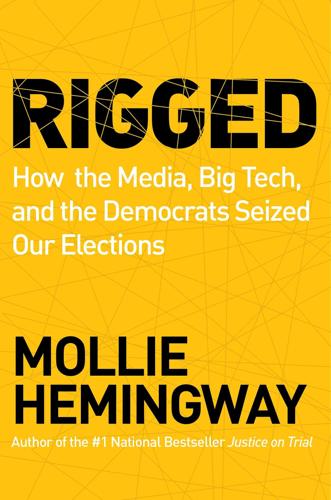
Rigged: How the Media, Big Tech, and the Democrats Seized Our Elections
by
Mollie Hemingway
Published 11 Oct 2021
36 The witch hunts didn’t just take place online. You could get no more dramatic illustration of how intolerant and hostile Silicon Valley was to Trump supporters than the story of Palmer Luckey—a true tech visionary who brought virtual reality to the masses as the founder of Oculus VR, the company that created the popular Oculus Rift goggles. In 2014, Facebook bought Oculus for $3 billion and brought Luckey on board to work at the company. In September 2016, it was revealed that Luckey had donated $10,000 to a pro-Trump group.37 The company went into crisis mode and pressured Luckey to sign a letter stating that he would be voting for the Libertarian Party candidate, Gary Johnson.

Mastering Blockchain, Second Edition
by
Imran Bashir
Published 28 Mar 2018
While it is true that many Digital Rights Management (DRM) schemes are being used currently along with copyright laws, but none of them is enforceable in such a way as blockchain based DRM can be. Blockchain can provide DRM functionality in such a way that it can be enforced fully. There are famously broken DRM schemes which looked great in theory but were hacked due to one limitation or another. One example is Oculus hack (http://www.wired.co.uk/article/oculus-rift-drm-hacked). Another example is PS3 hack, also copyrighted digital music, films and e-books are routinely shared on the internet without any limitations. We have copyright protection in place for many years, but digital piracy refutes all attempts to fully enforce the law on a blockchain, however, if you own an asset, no one else can claim it unless you decide to transfer it.

Coders: The Making of a New Tribe and the Remaking of the World
by
Clive Thompson
Published 26 Mar 2019
But nearly every one also described the daily fight of having to prove themselves over and over again to the wide swathe of industry peers who, tacitly or openly, assumed they didn’t have serious technical chops, that they couldn’t. One coder, Stephanie Hurlburt, was a classically nerdy math-head who’d cut her teeth doing deep work on graphics. “I love C++, the low-level stuff,” she tells me. She’d worked for a series of firms, including Unity (which makes a popular game-design tool), and then for Facebook on its Oculus Rift VR headset, cranking mad hours to release their first demo. Hurlburt was accustomed to shrugging off neg hits. There were many: She’d been told, including by many authority figures she admired, that girls weren’t wired for math. While working as a coder, if she expressed ignorance of nearly any niggling concept in graphics, some male colleagues would pounce.

WTF?: What's the Future and Why It's Up to Us
by
Tim O'Reilly
Published 9 Oct 2017
At various architectural firms, architects and their clients equipped with augmented or virtual reality are stepping into their own models, modifying them, and seeing what they wish to build before they actually create anything in the physical world. Despite the much-publicized failure of Google Glass and the premature hype around virtual reality platforms such as Oculus Rift, there is plenty of evidence that augmented reality and virtual reality will have a powerful impact in on-demand learning. Smartphones and tablets alone are already being used effectively in areas like telehealth and shop floor communications and on-the-job training, and with Microsoft’s investment in HoloLens, continued experiments like Snap’s Spectacles, and rumored new products from Apple, not to mention that a next generation of Google Glass is likely still under development, I’m confident that there will be plenty of news on this front.

Facebook: The Inside Story
by
Steven Levy
Published 25 Feb 2020
In the meantime, Oculus was basically a game company selling hardware, an alien business to Facebook. Survival as a game company would require Facebook to toss in billions of dollars and compete in an industry it didn’t care much about. Oculus had a chicken-and-egg problem. Ideally there would be a wide library of great software that ran on its flagship product, Oculus Rift. But it was expensive: the $500 price tag did not include the supercharged computer required to run the software, which brought the total to $1,500, more than most people could afford. Because the user base remained tiny, the big game developers did not see the value of spending the million-plus dollars it would take to create a first-class title.

Palo Alto: A History of California, Capitalism, and the World
by
Malcolm Harris
Published 14 Feb 2023
Eventually all these connections surfaced, but as Stanford Law professor Al Gidari told the New York Times regarding Clearview: “Absent a very strong federal privacy law, we’re all screwed.”85 The company claims a value of over $100 million. How far does this road go? Among the Trumpists with Clearview access was Palmer Luckey, the founder of the virtual reality start-up Oculus Rift, which he sold to Facebook for $3 billion.86 Like Thiel, he funded pro-Trump propaganda, and Luckey’s next firm came right out of the Thielverse: a defense contractor that builds physical electronics systems. He founded it with a handful of Palantir employees, and it got a Tolkien name, too: Anduril, the name of a Lord of the Rings sword.